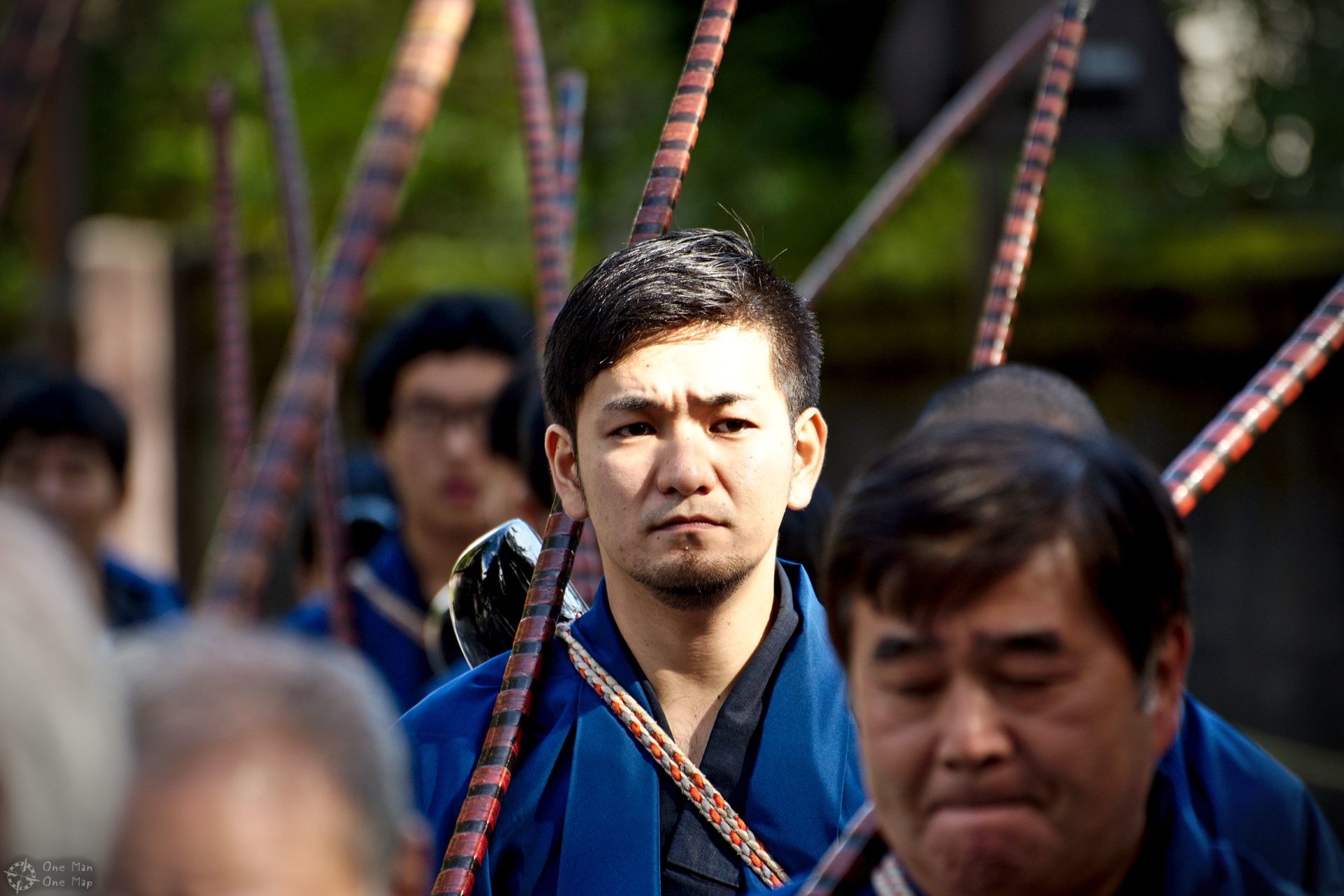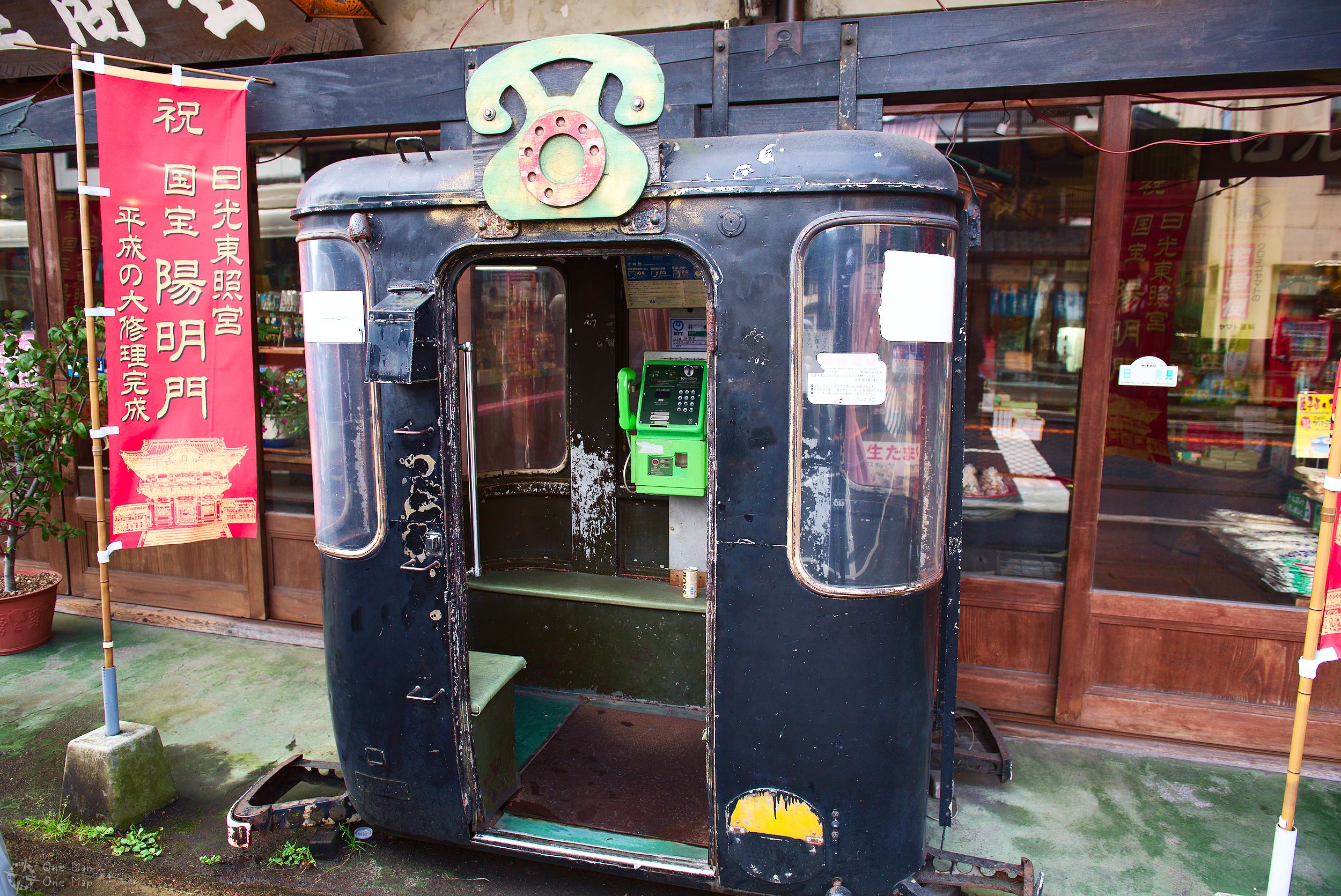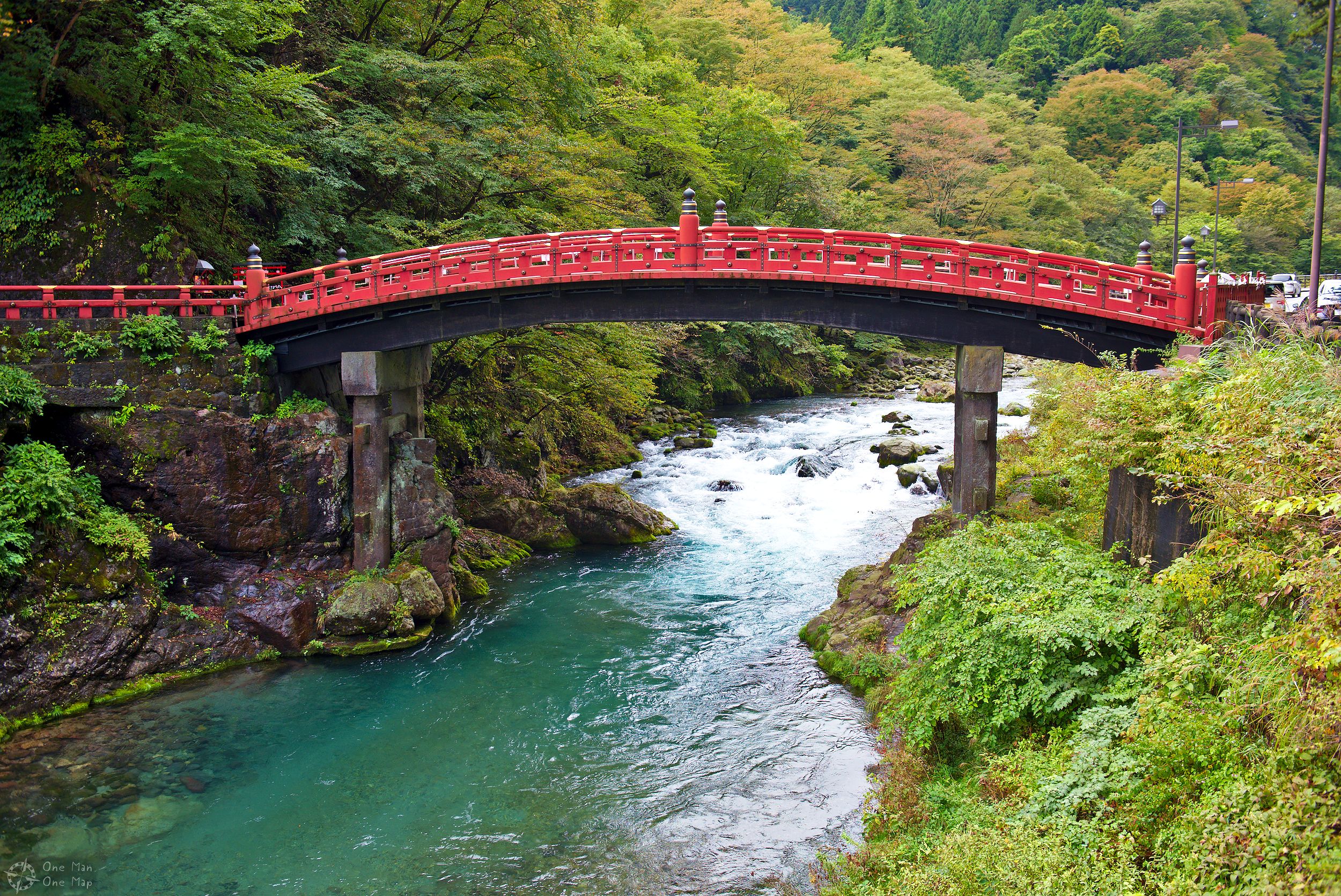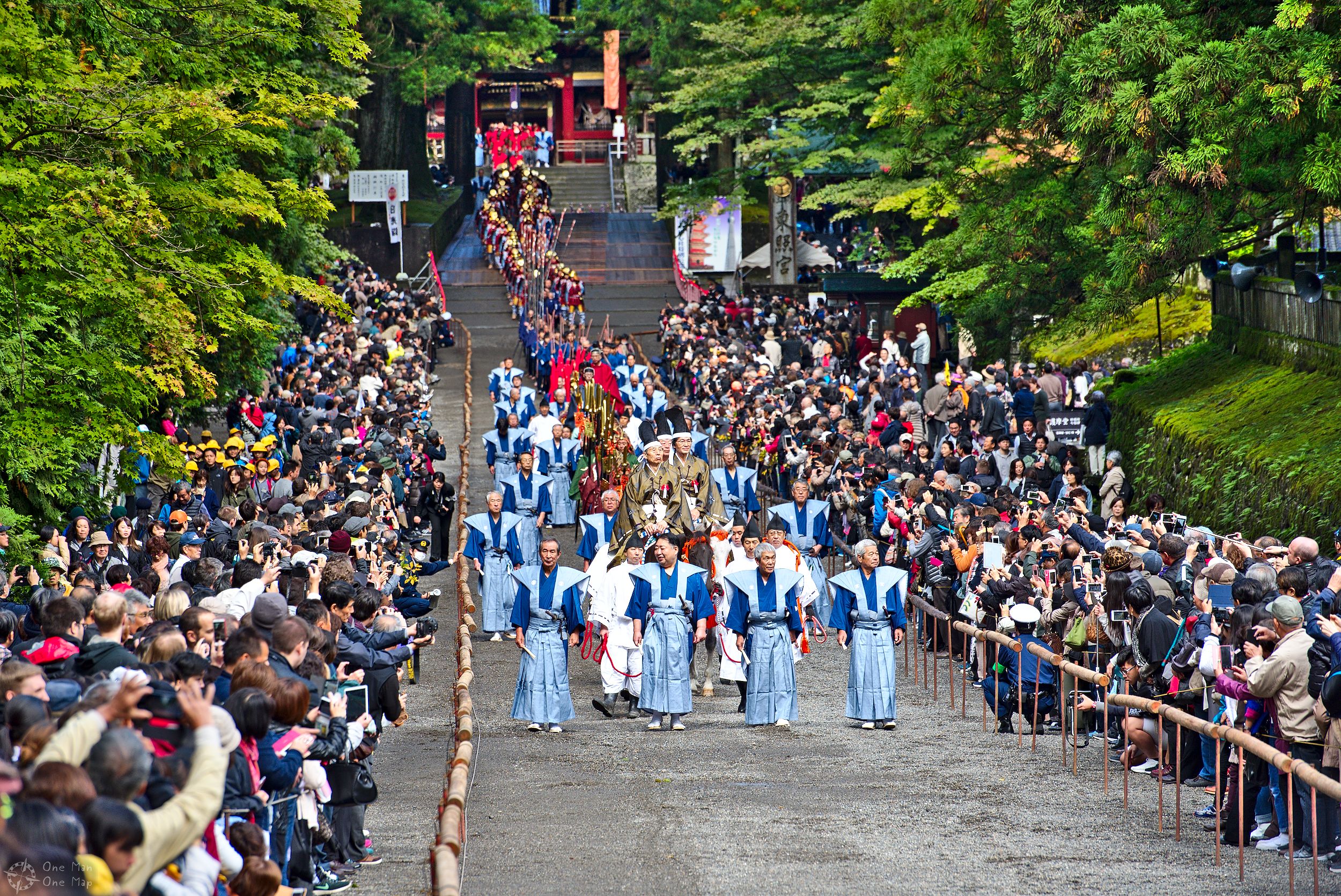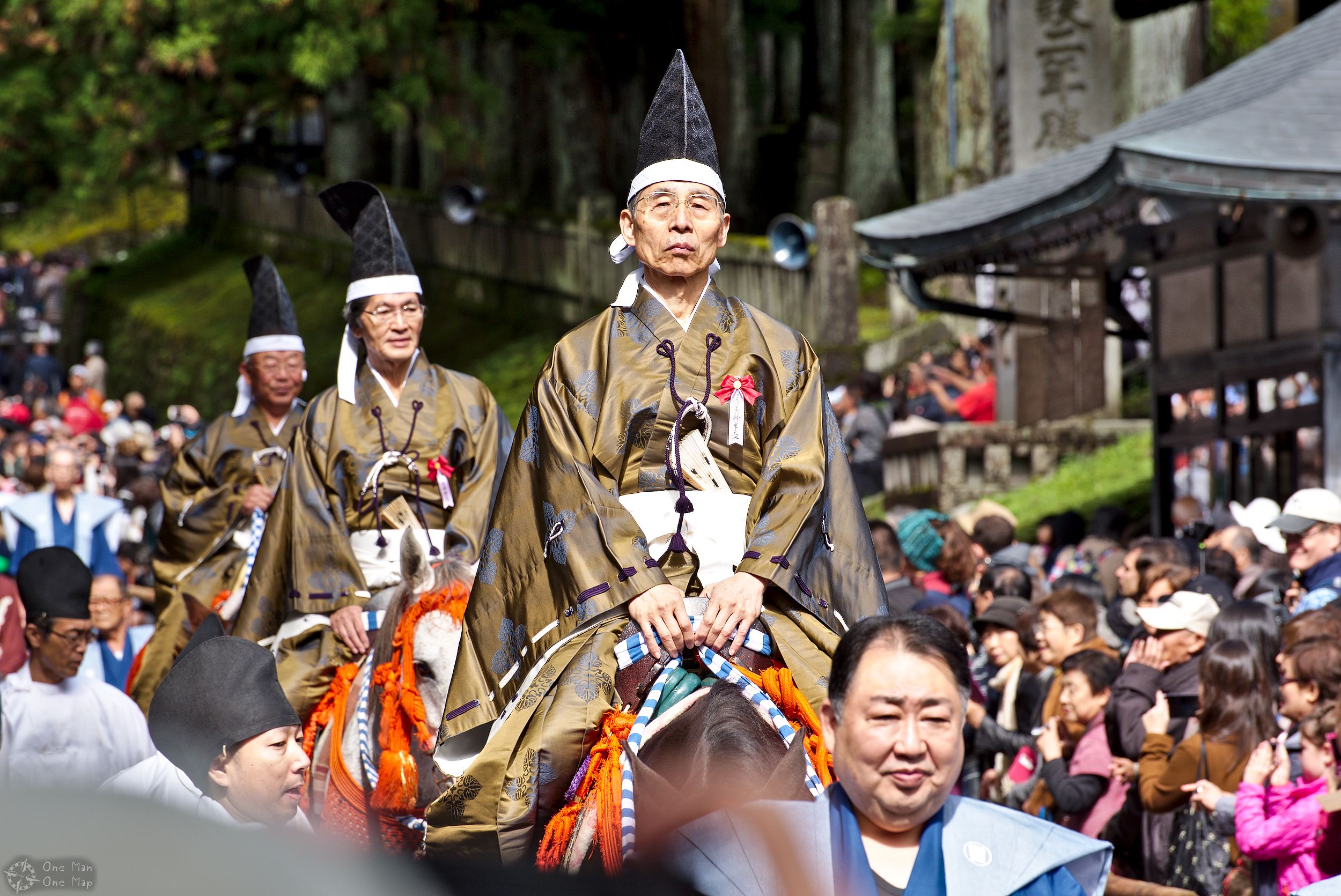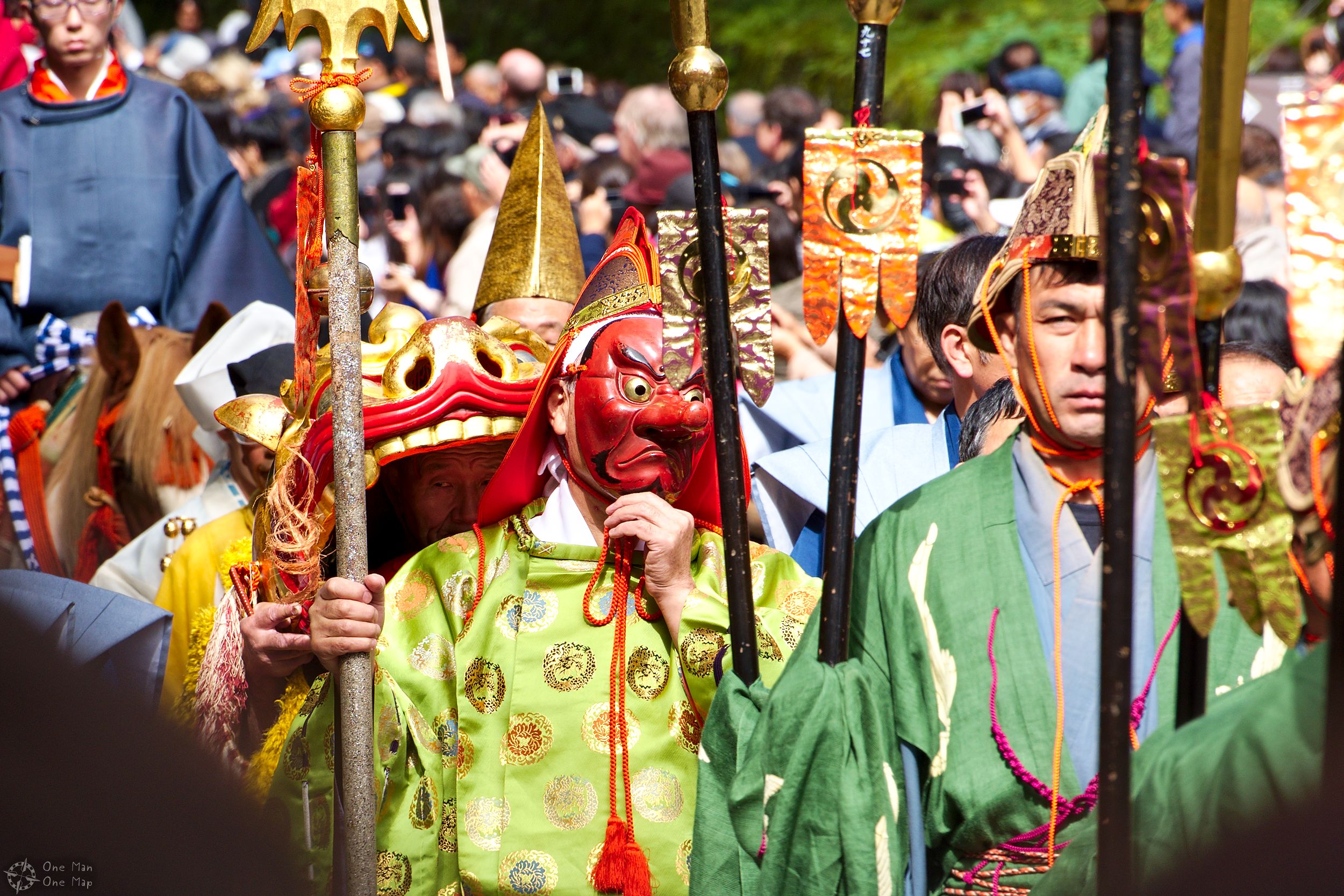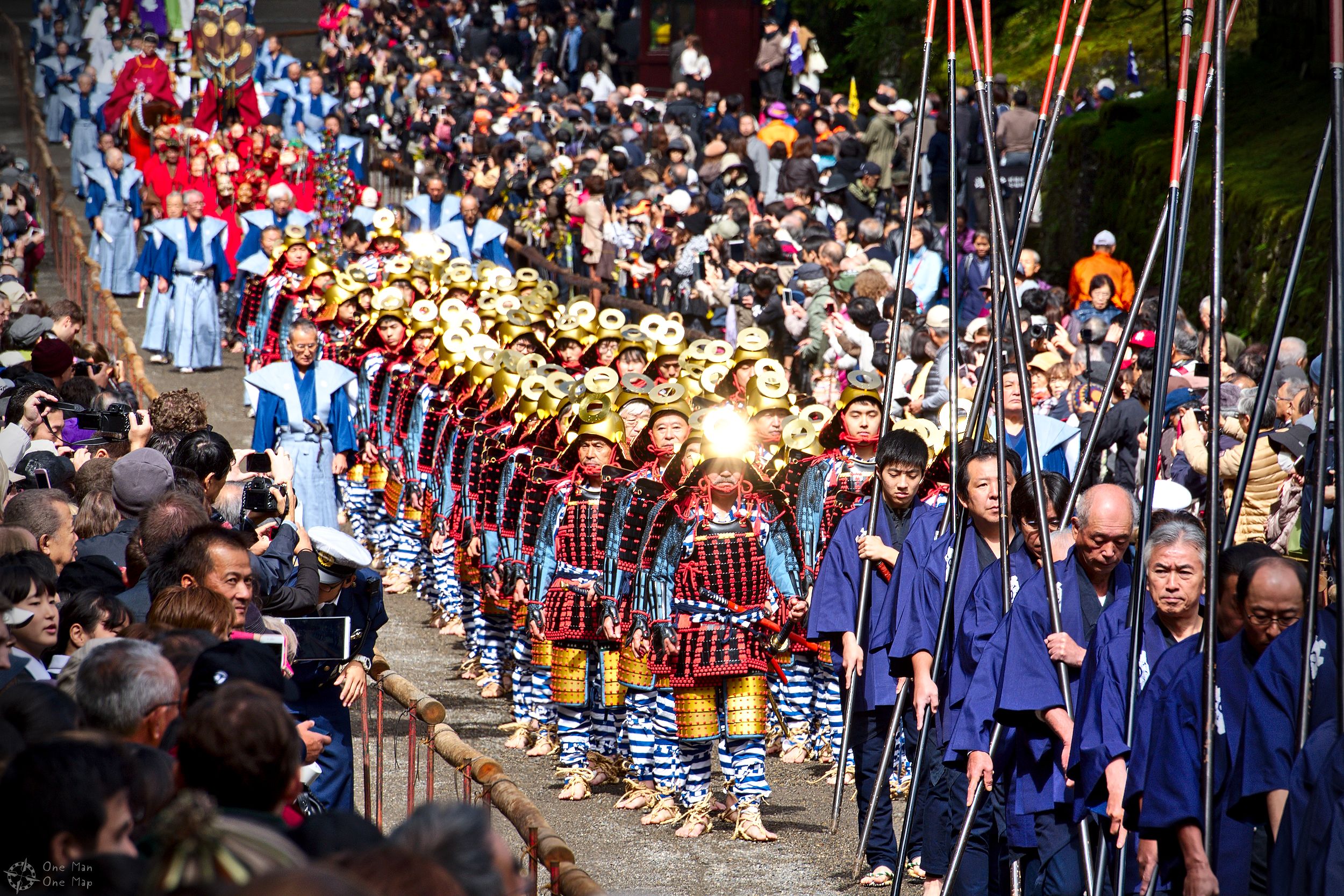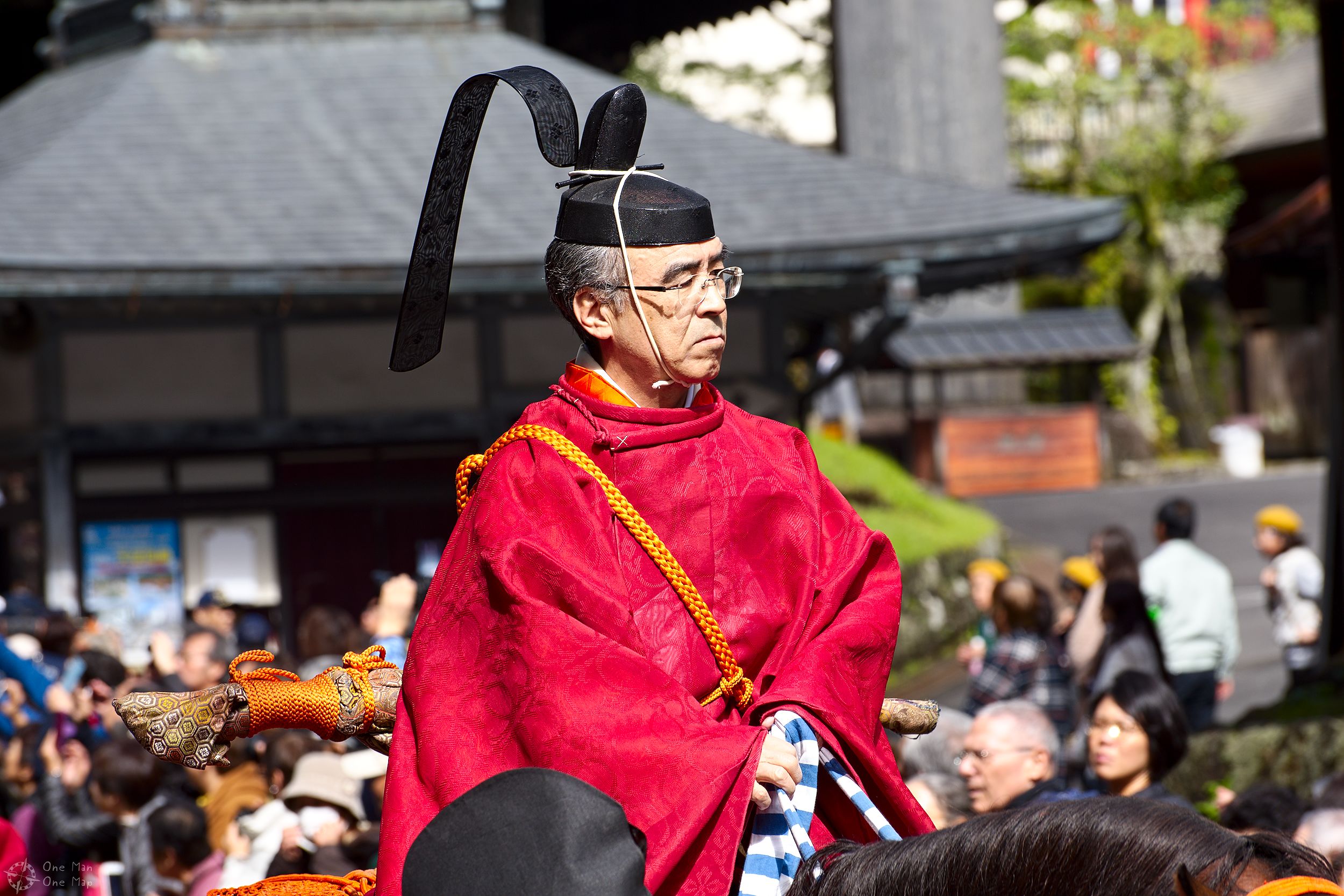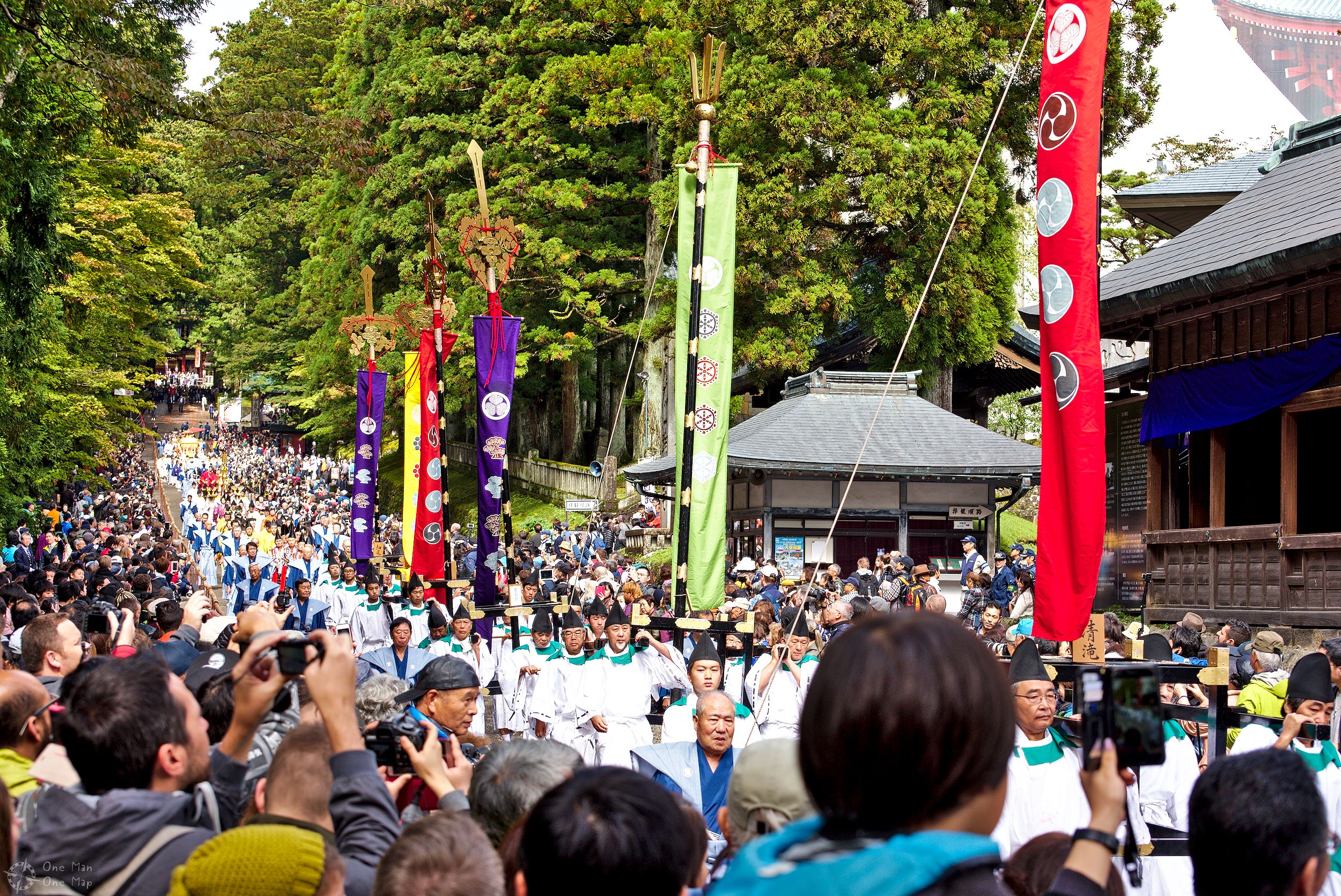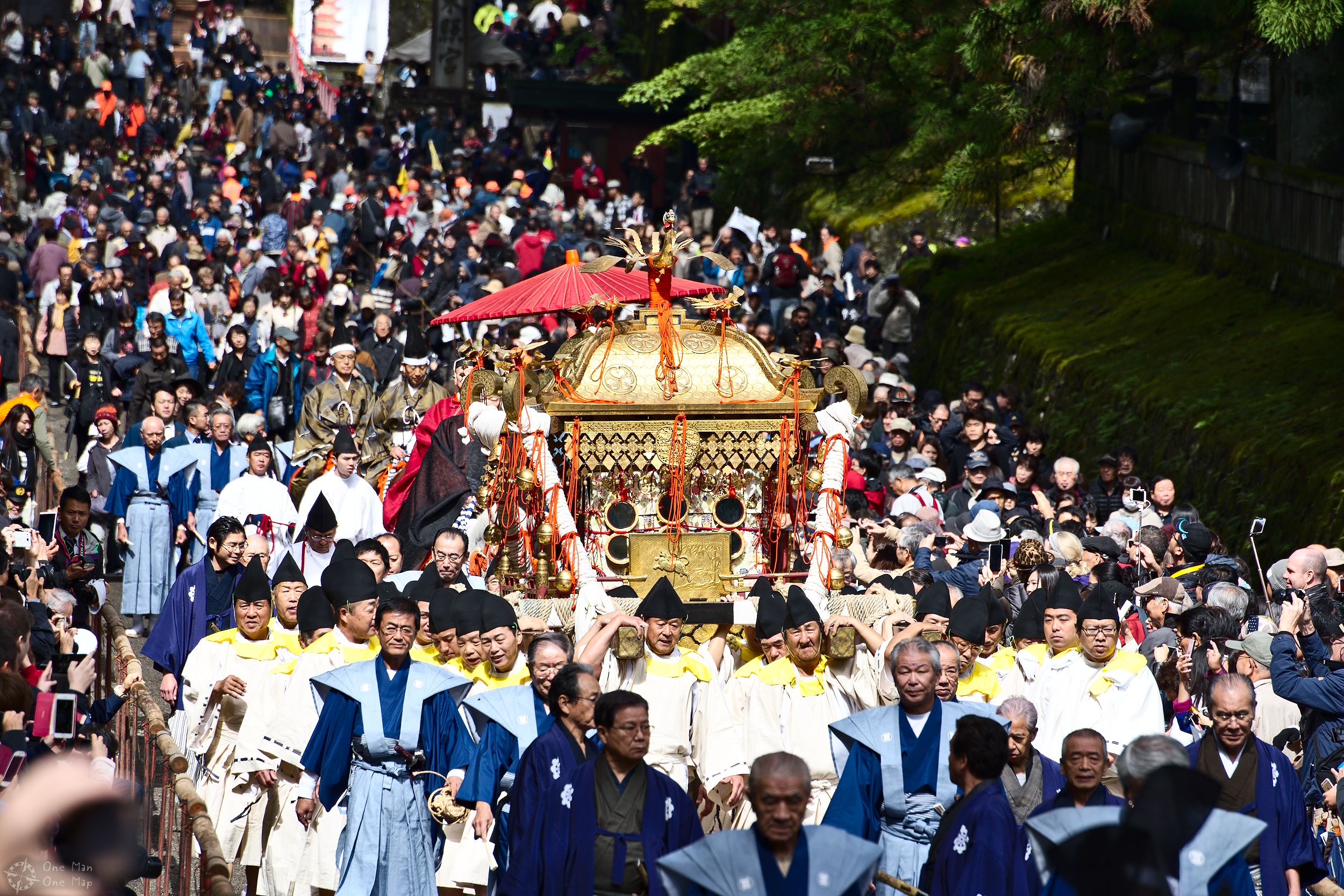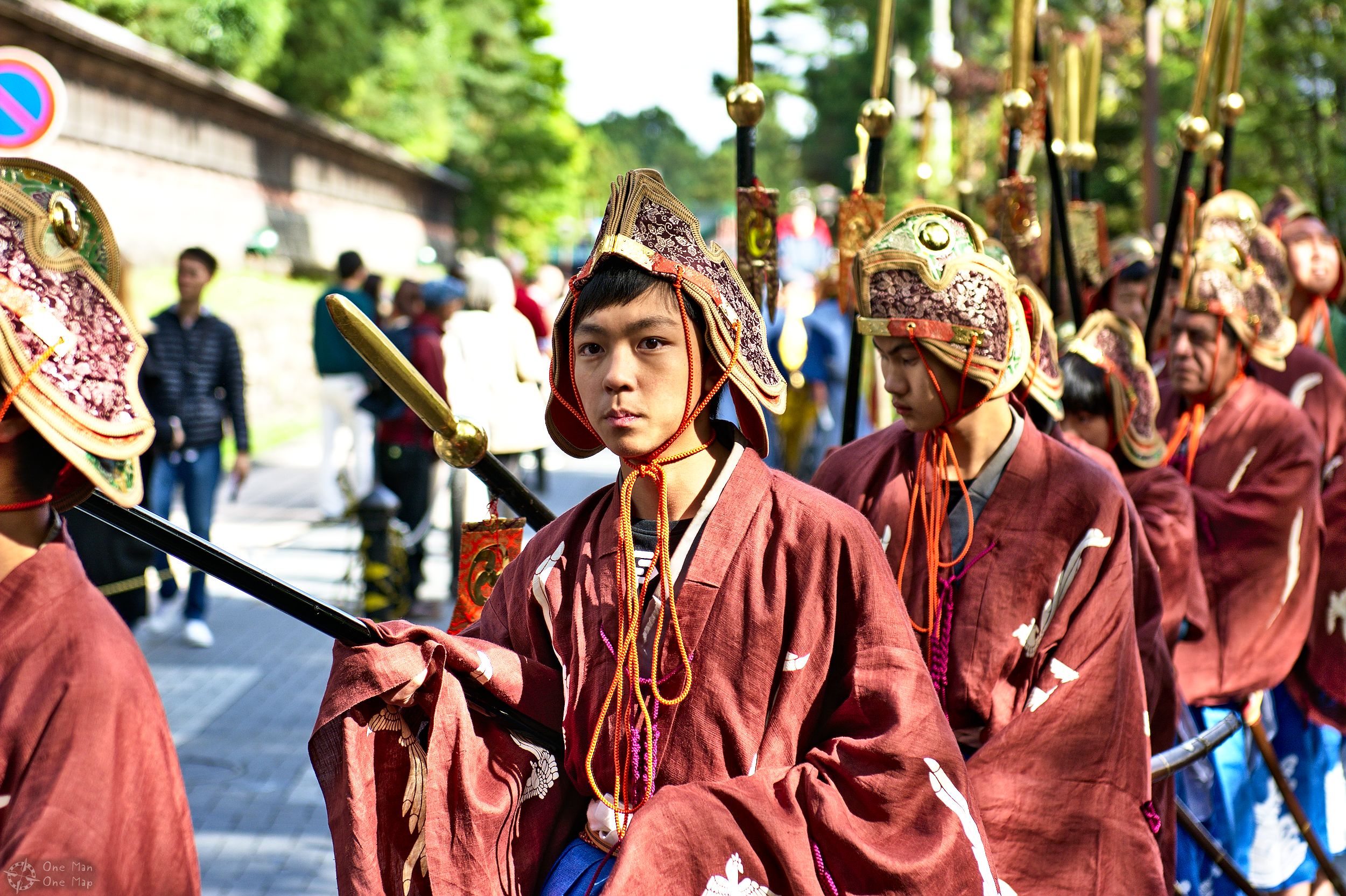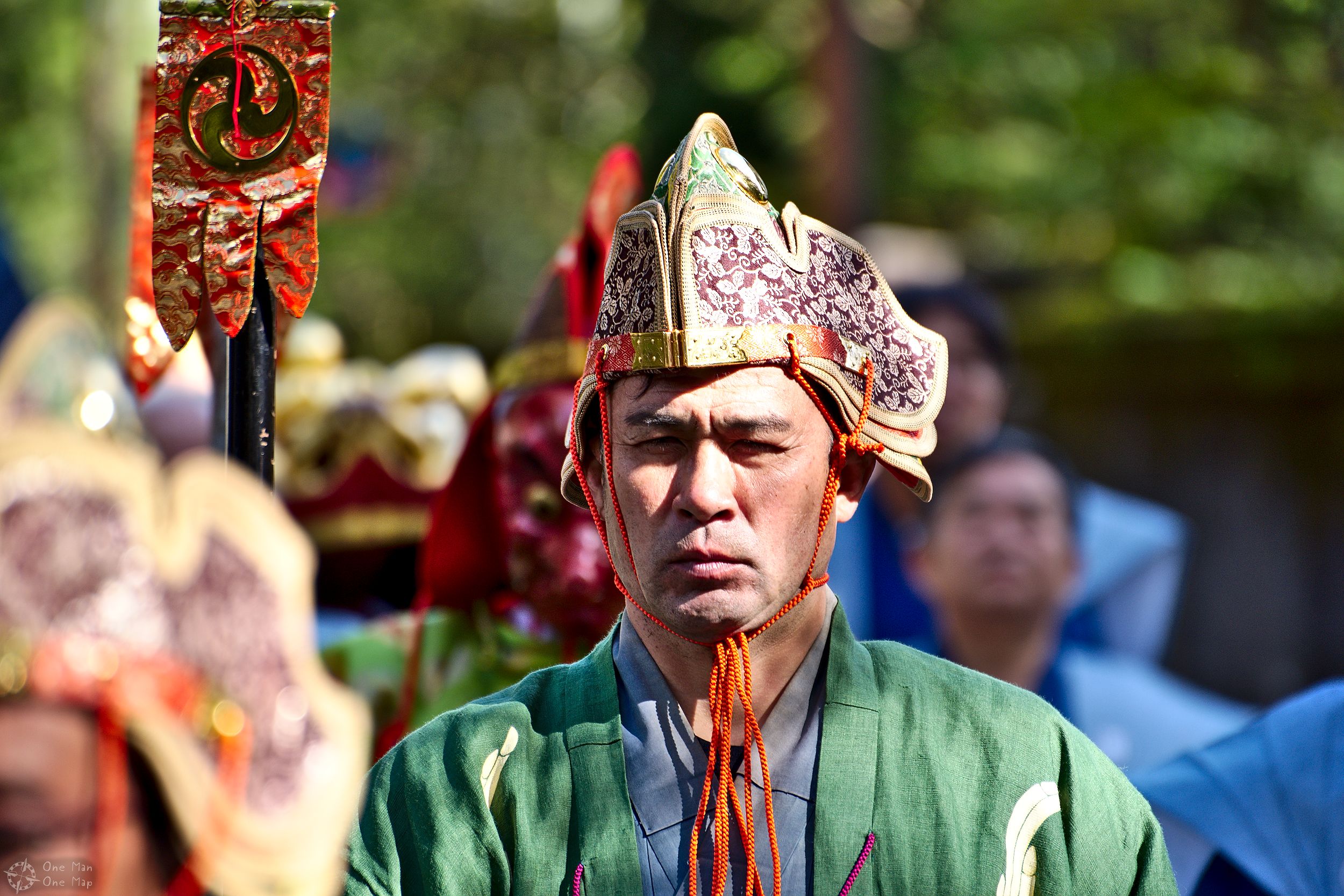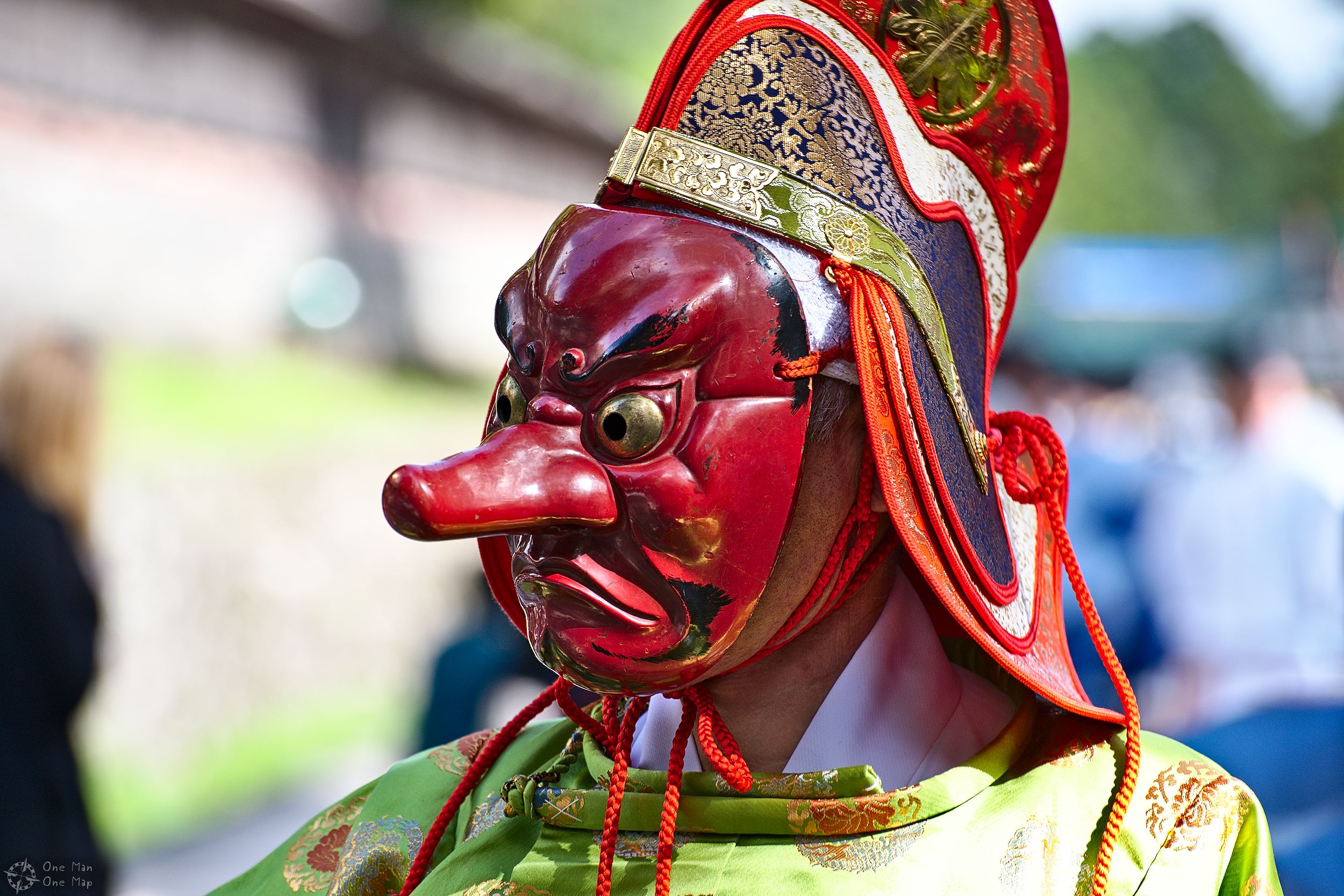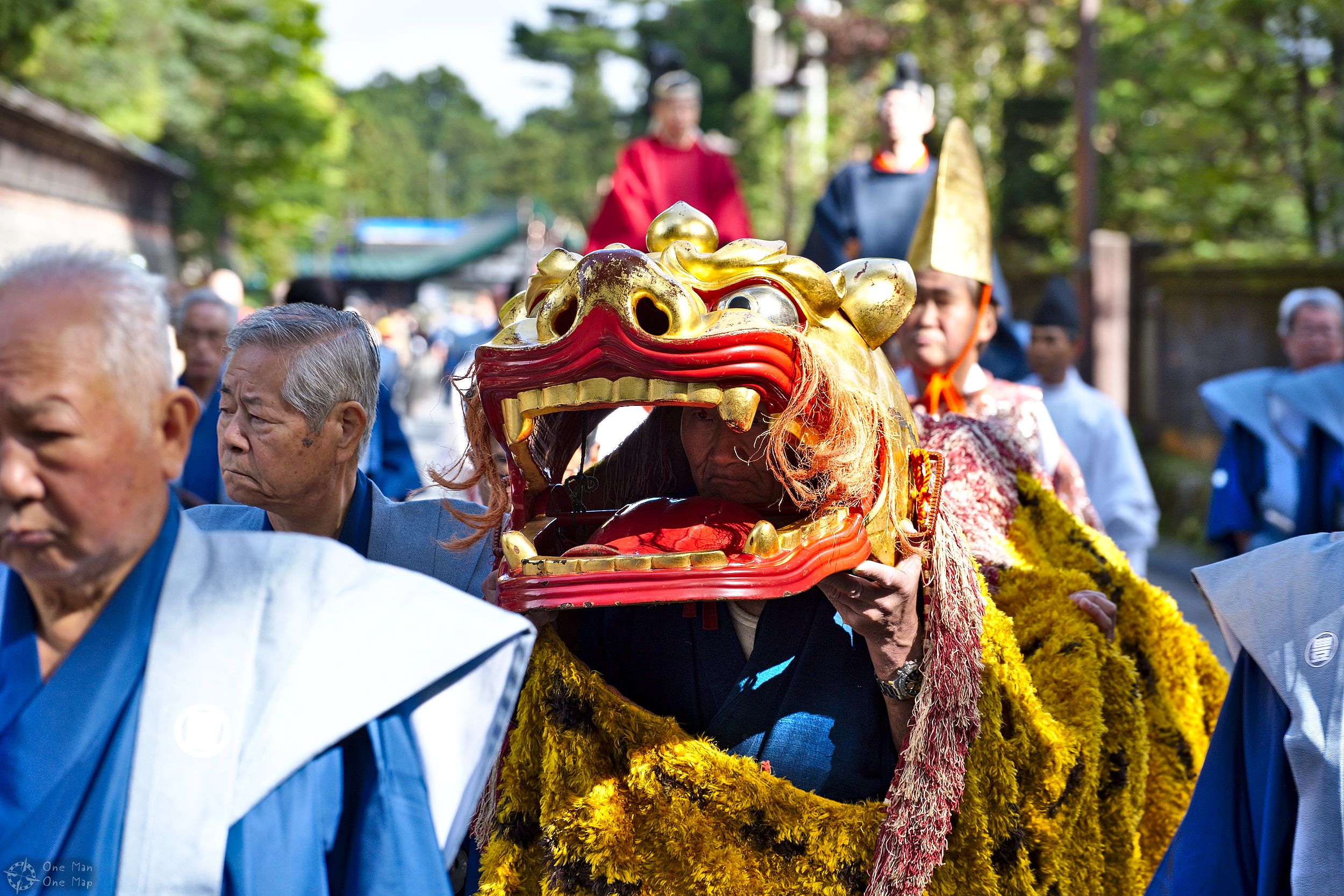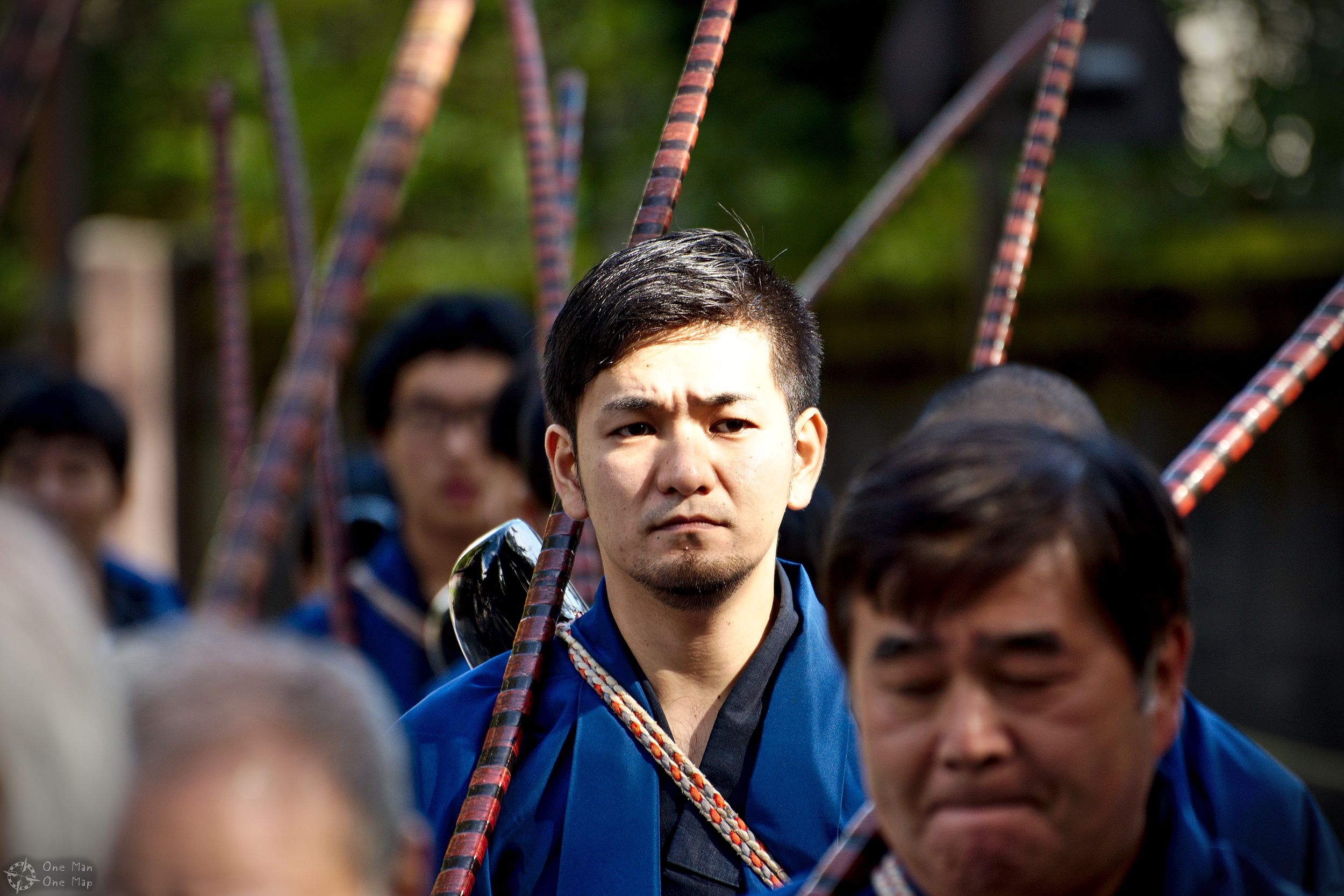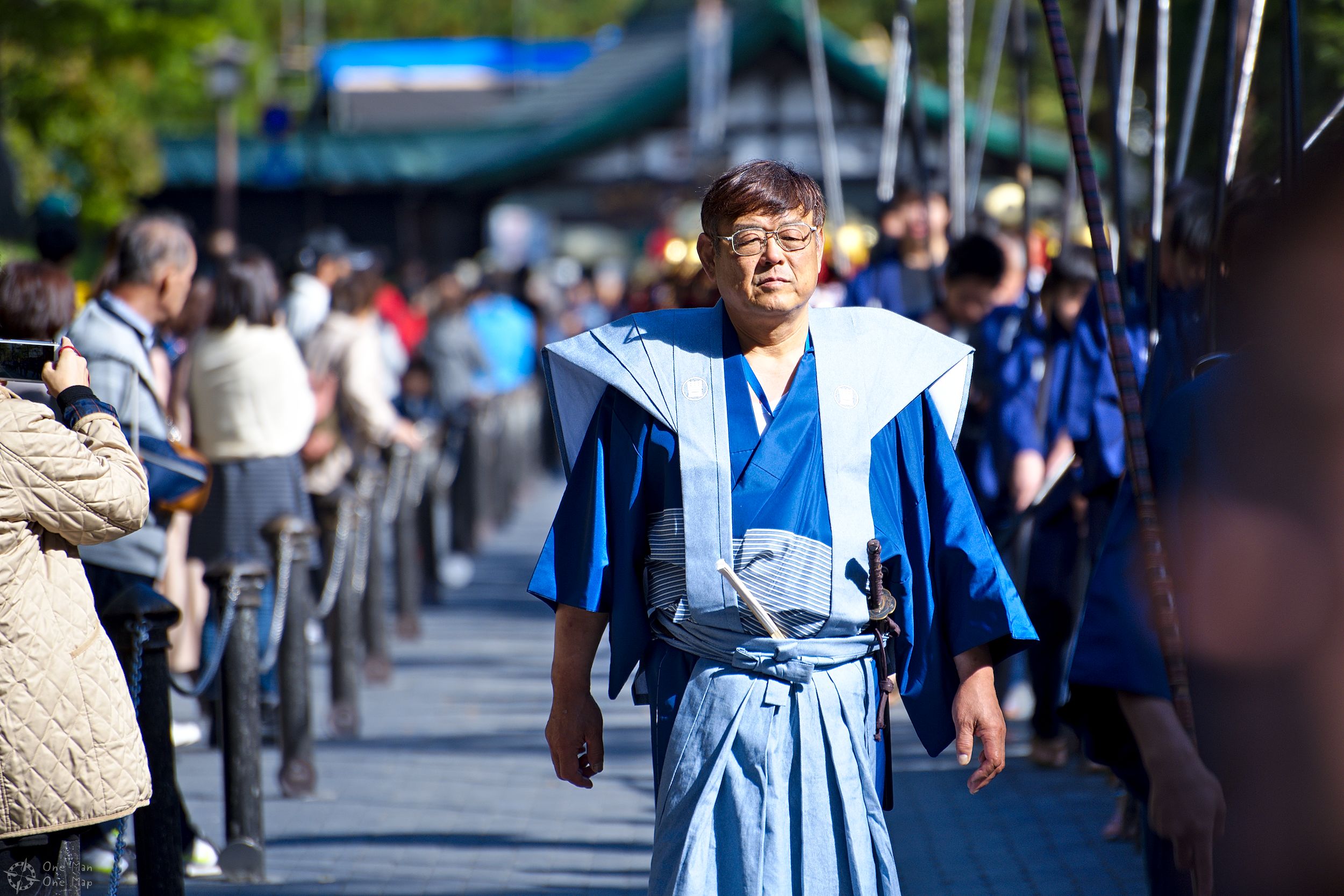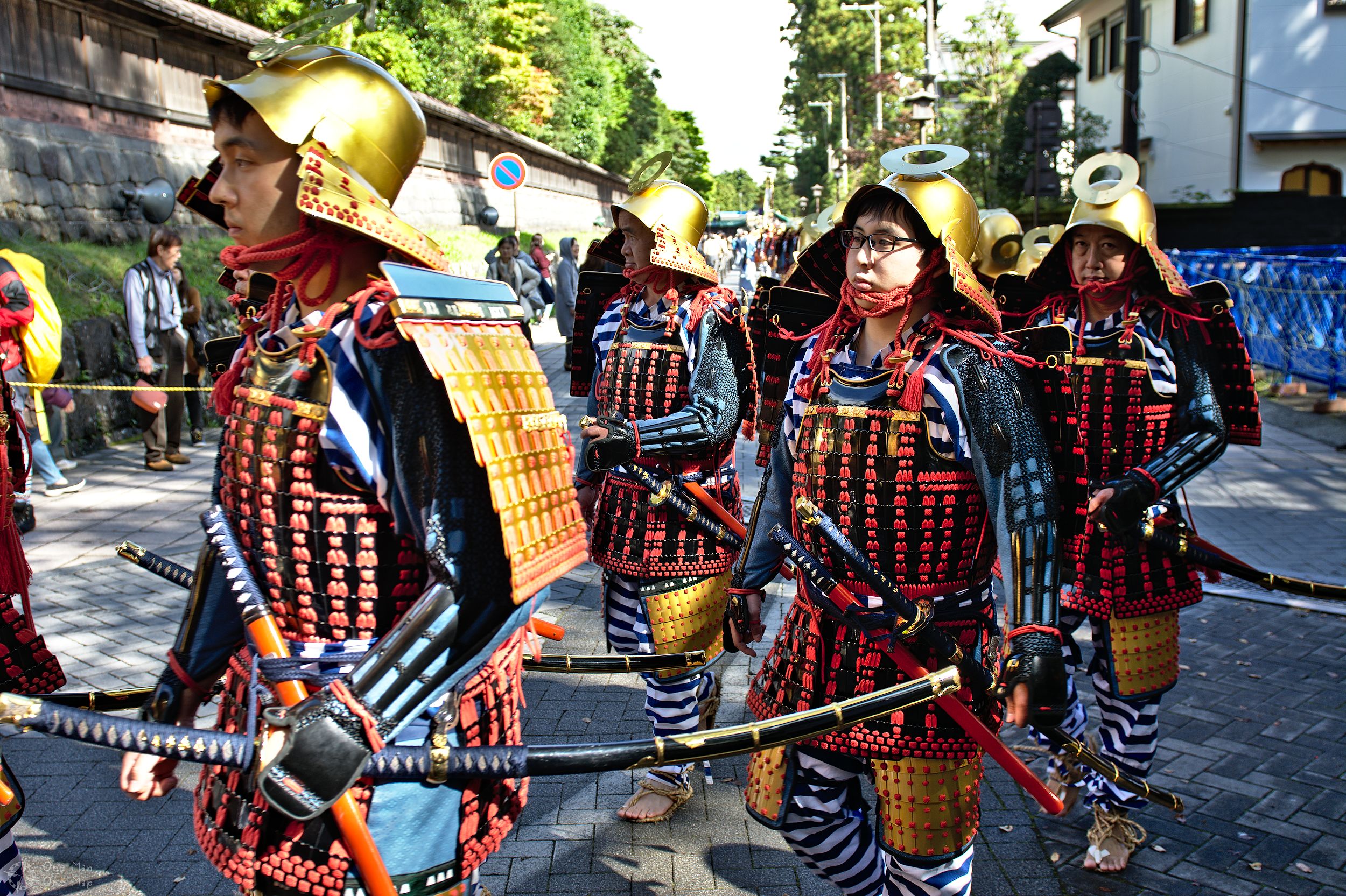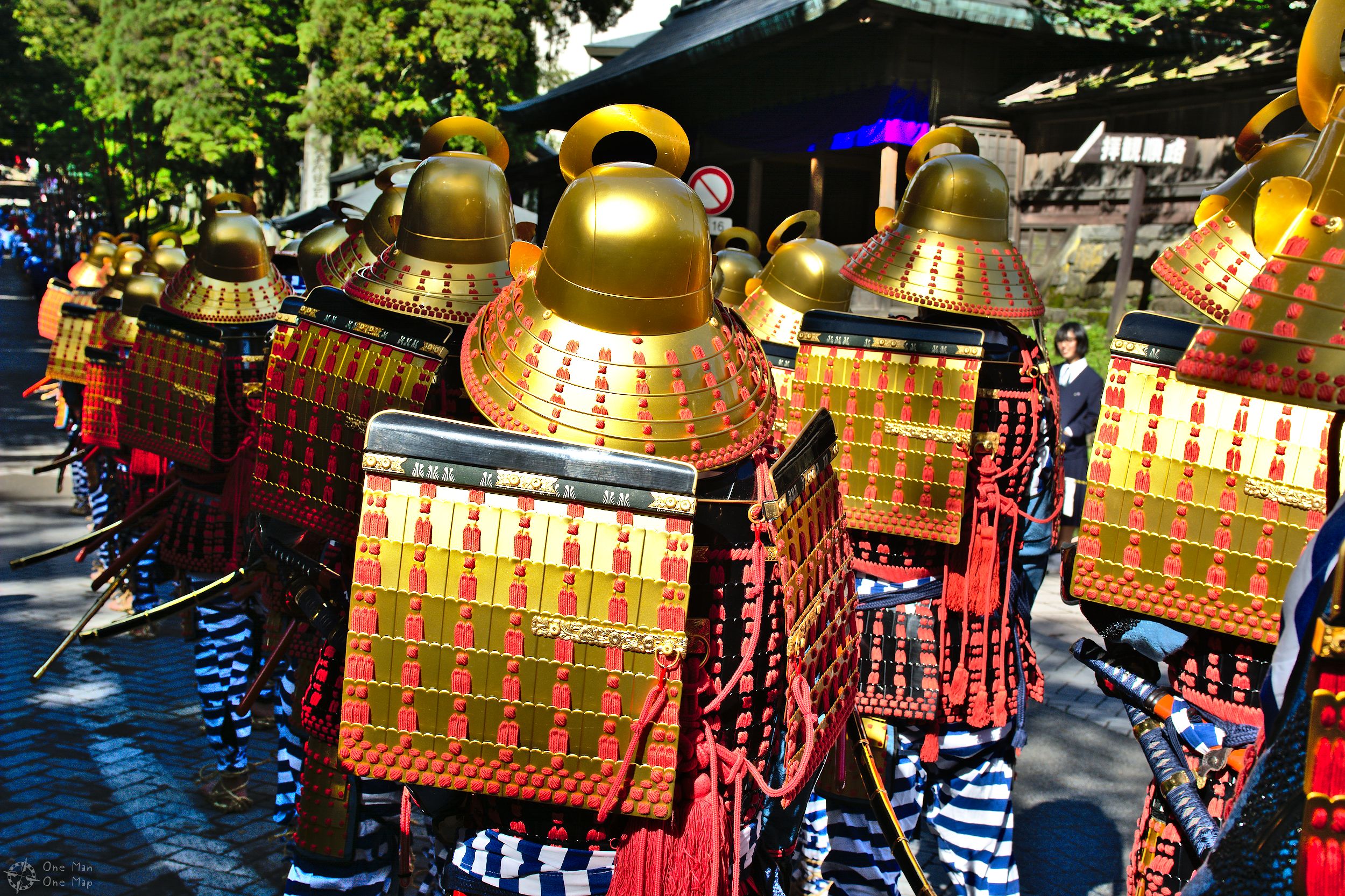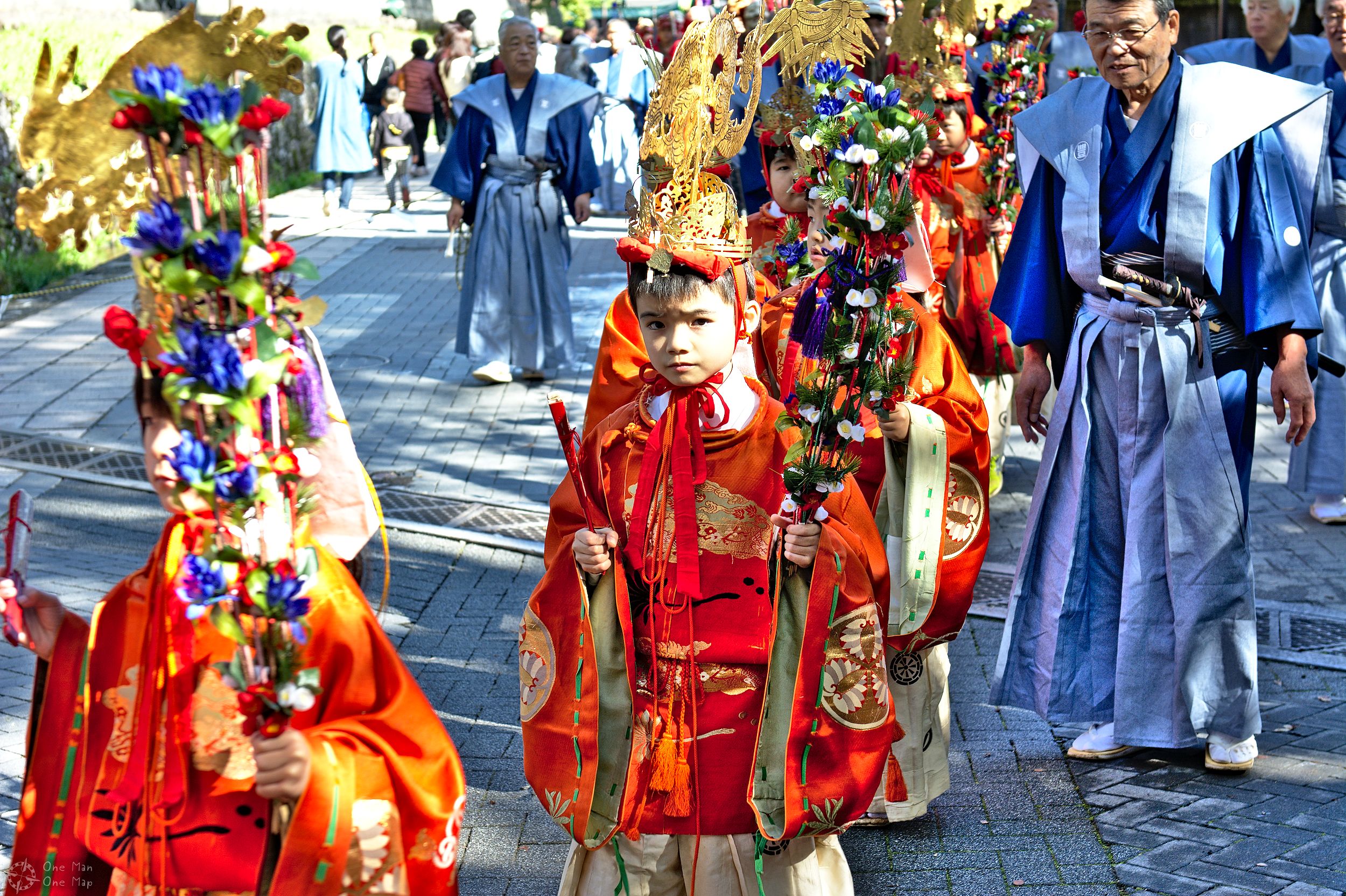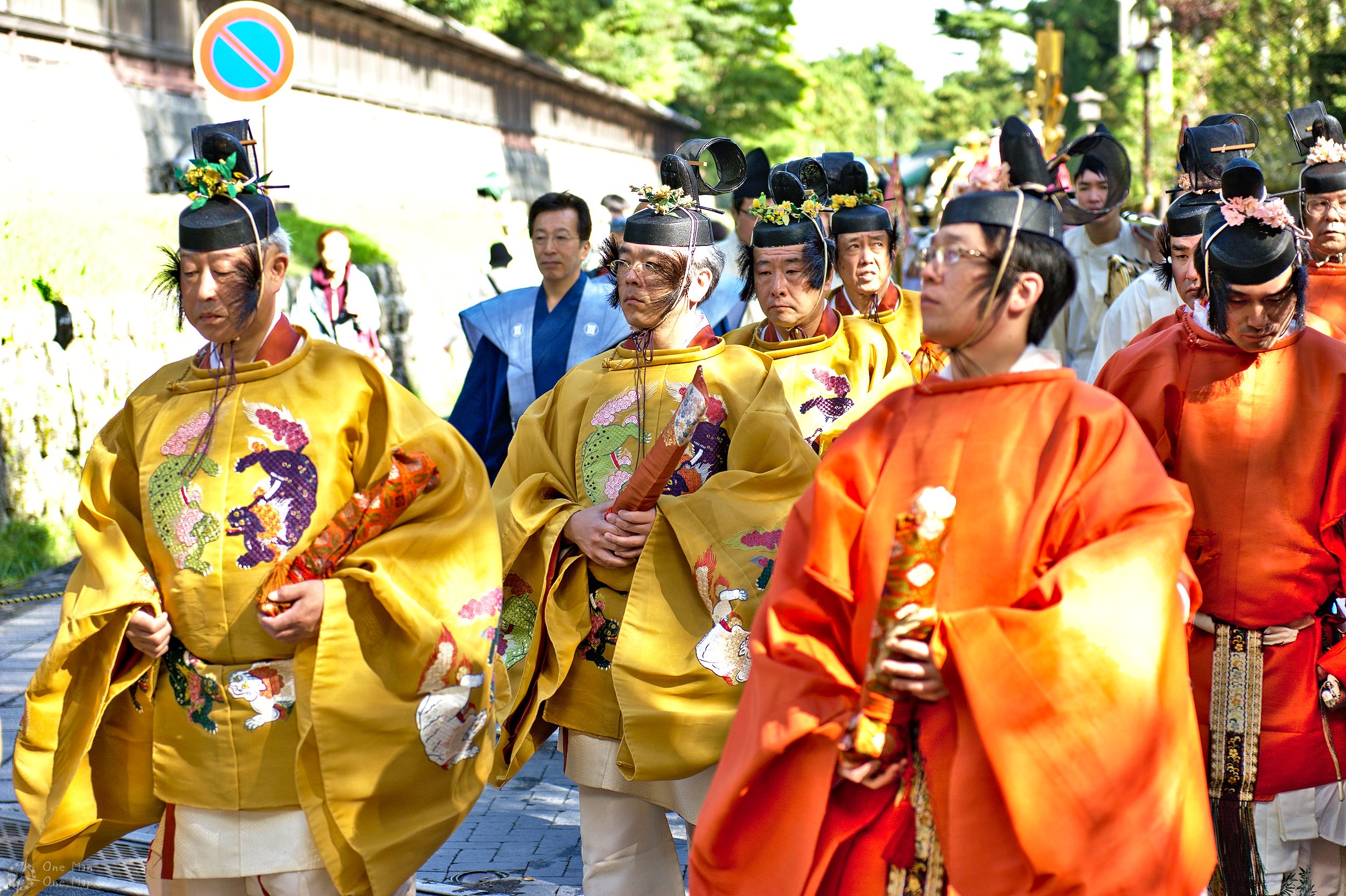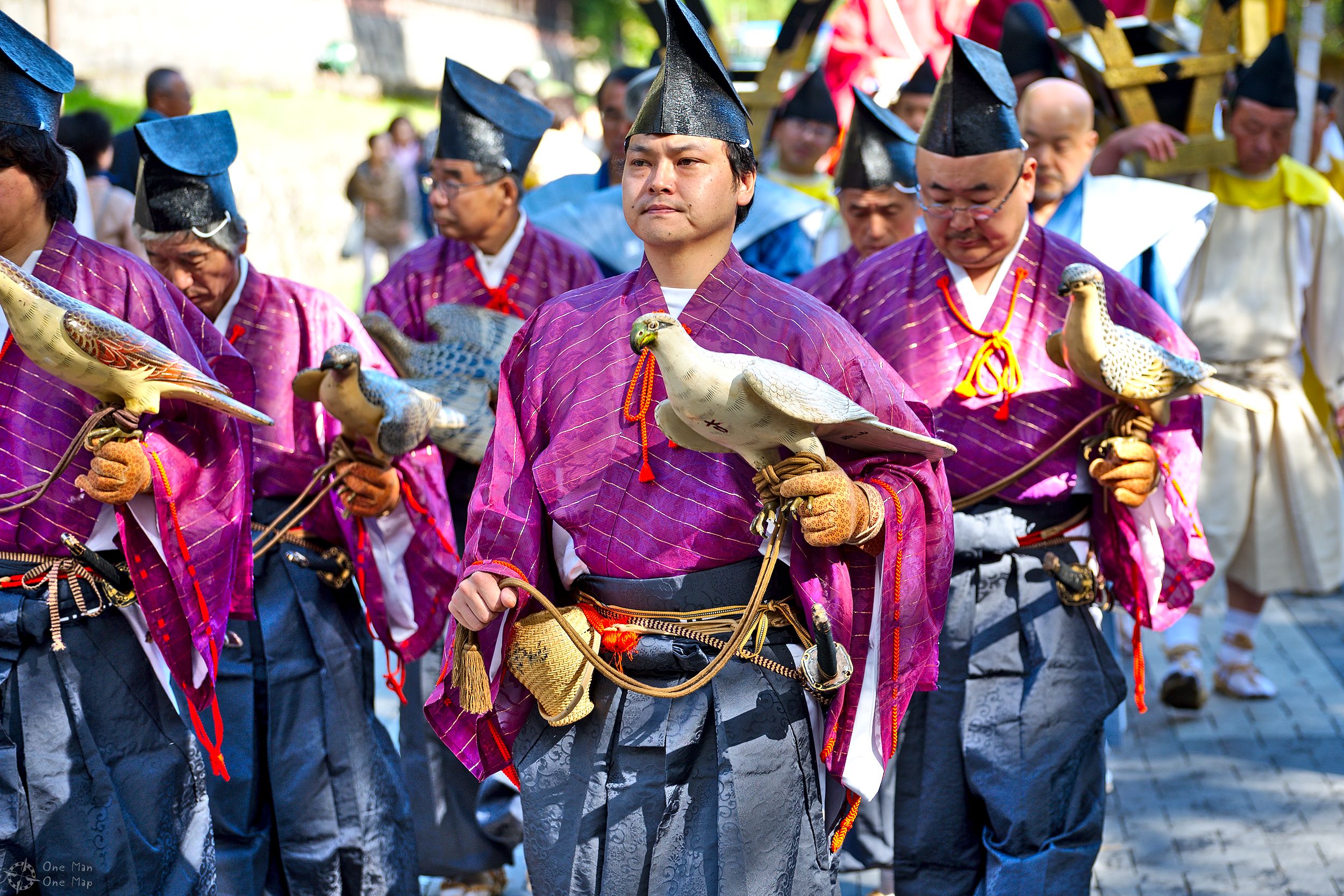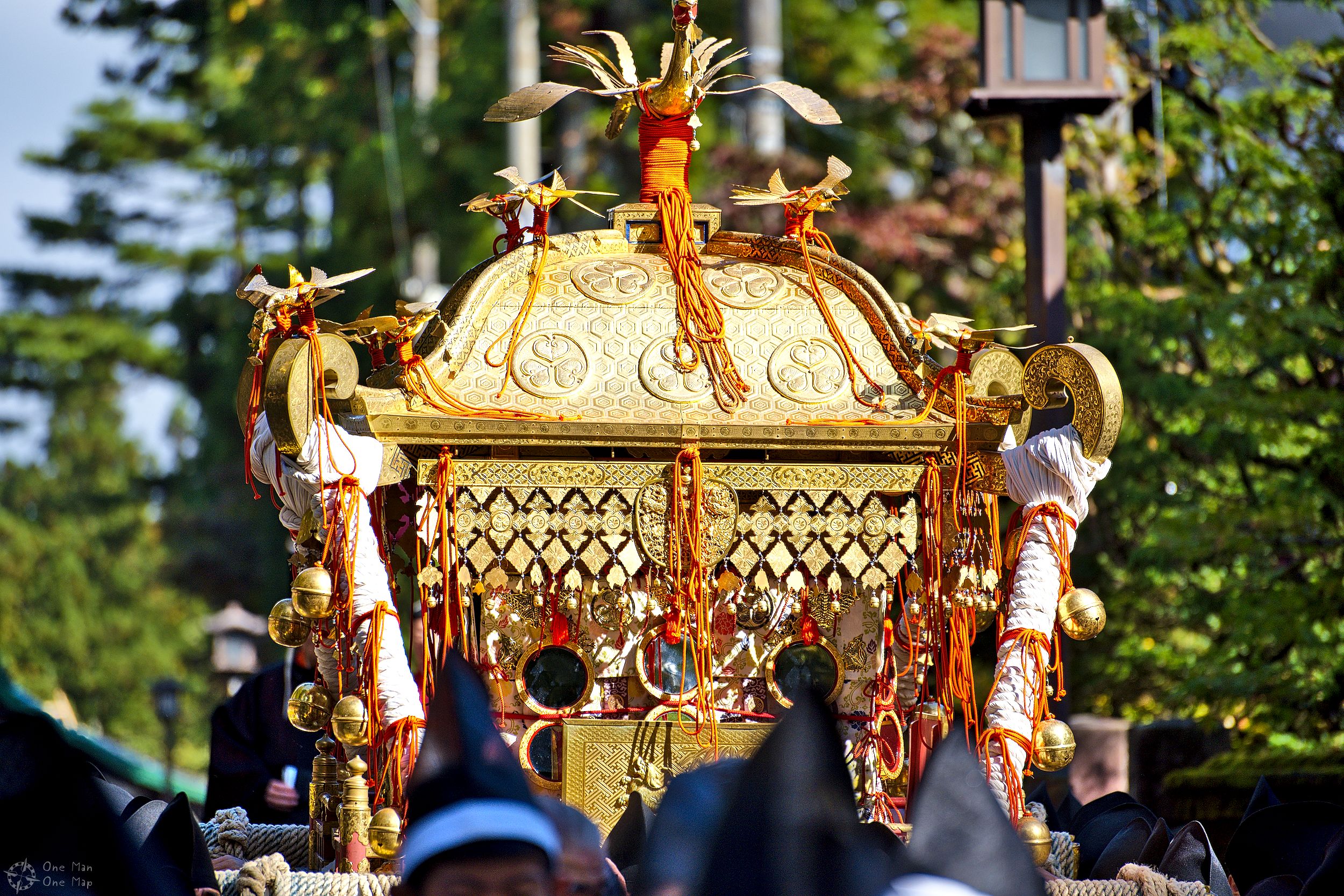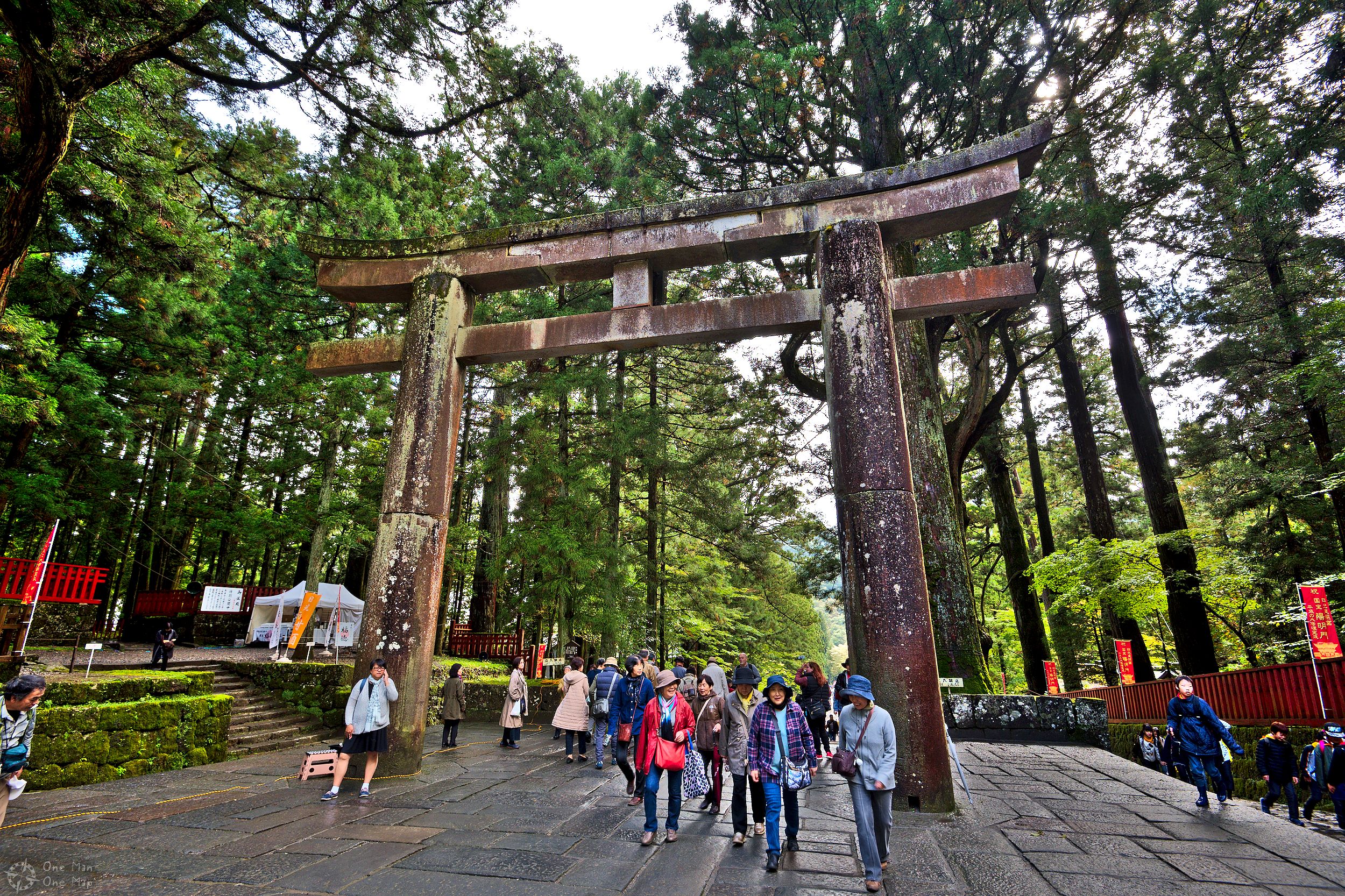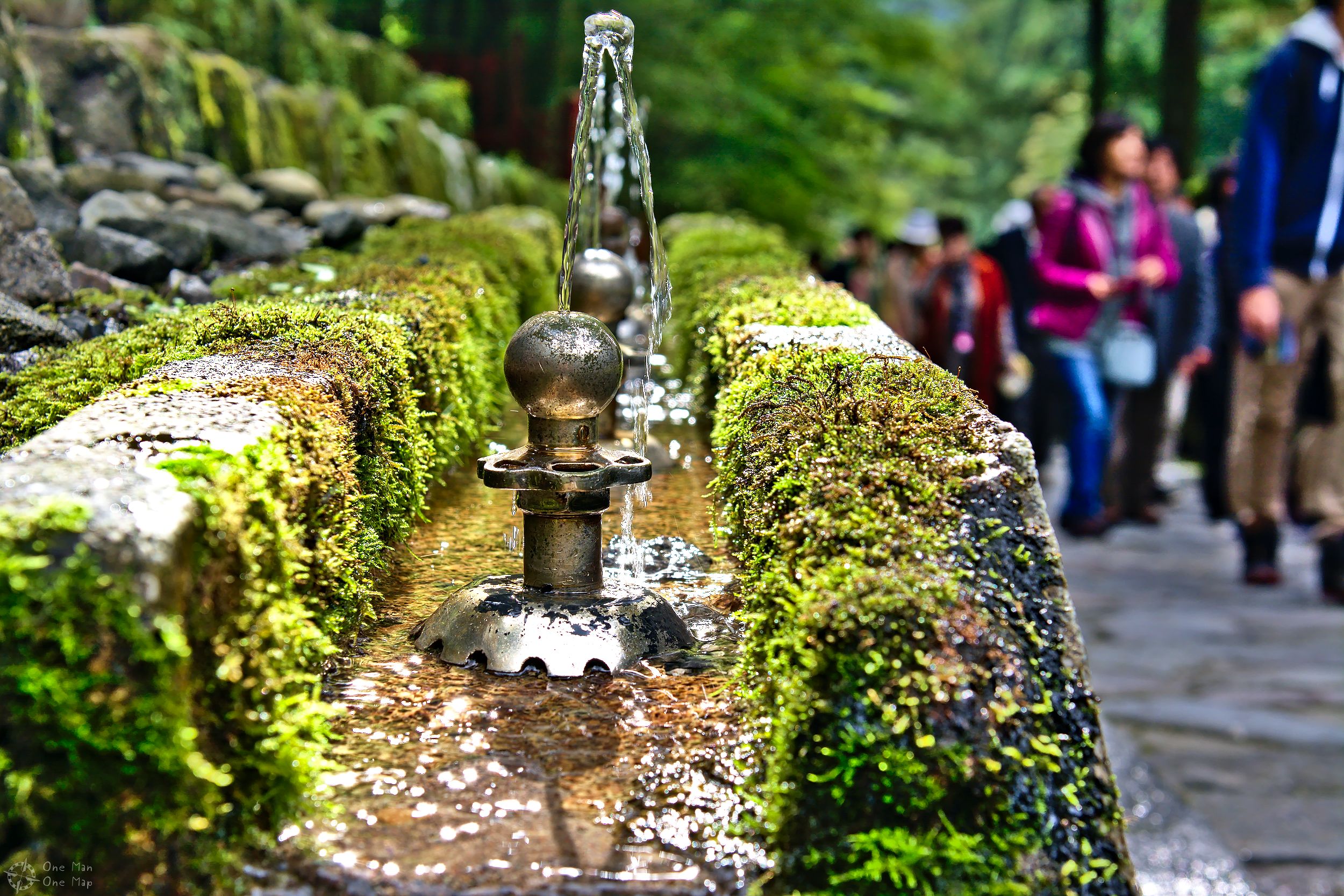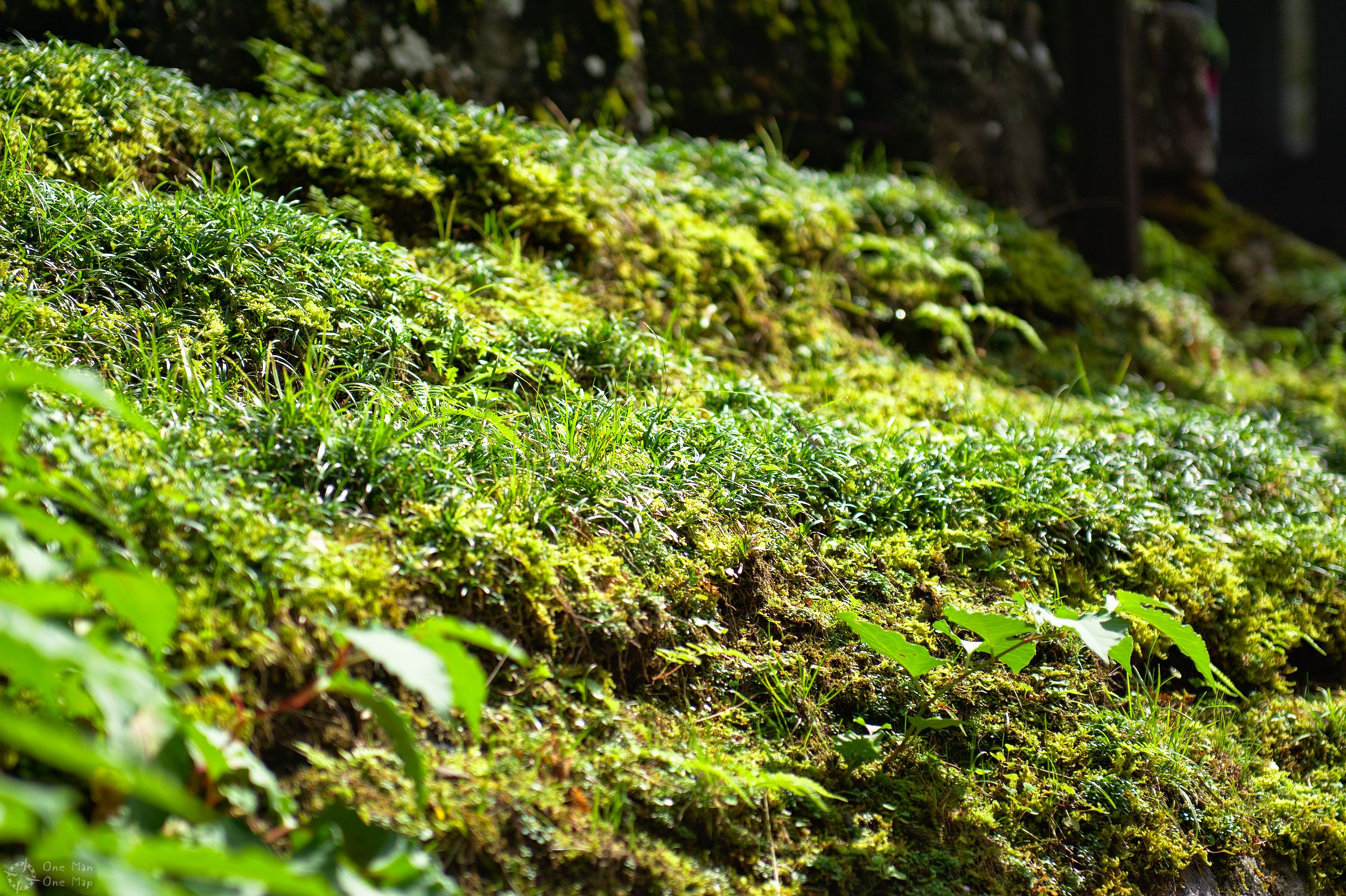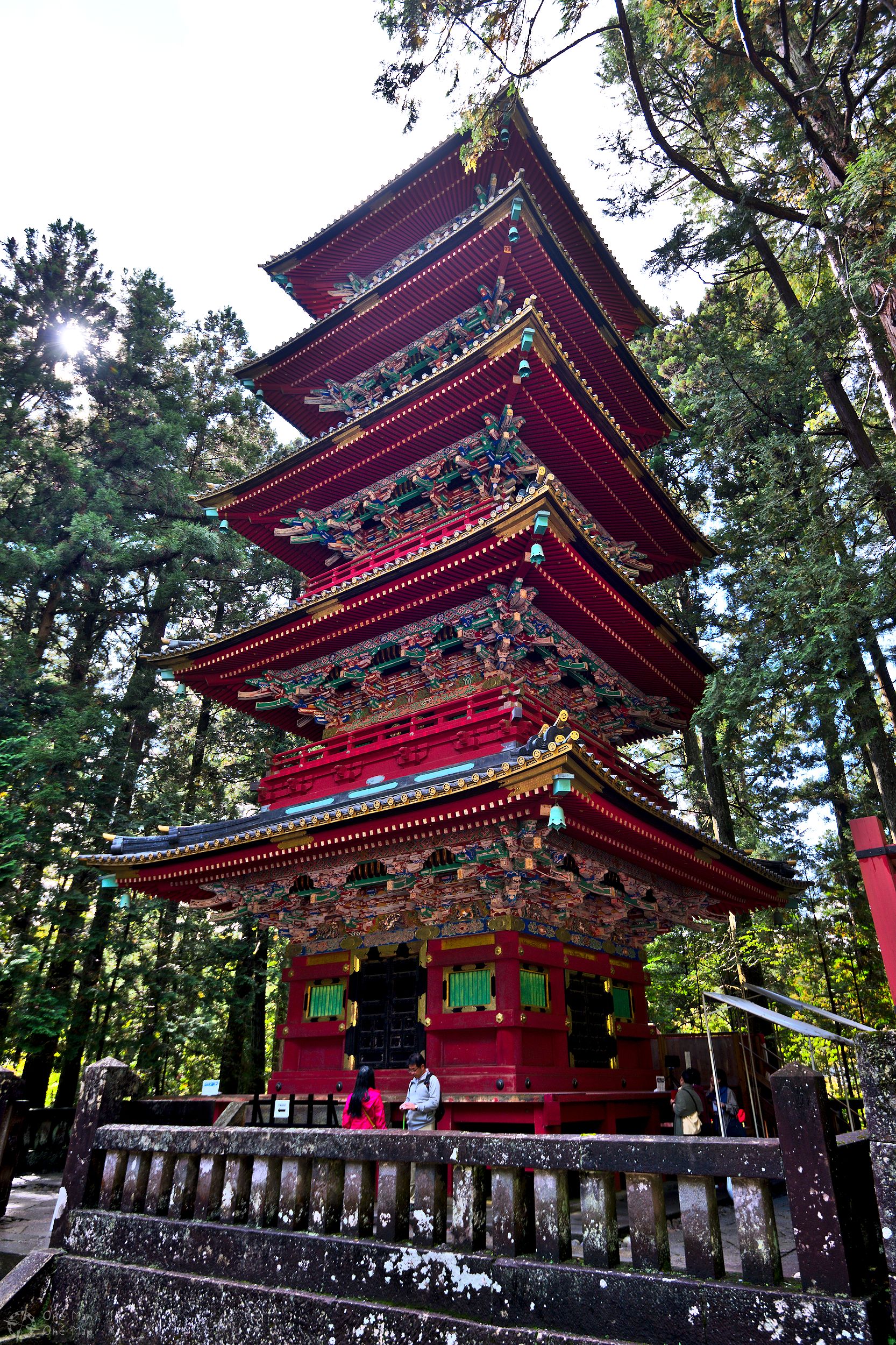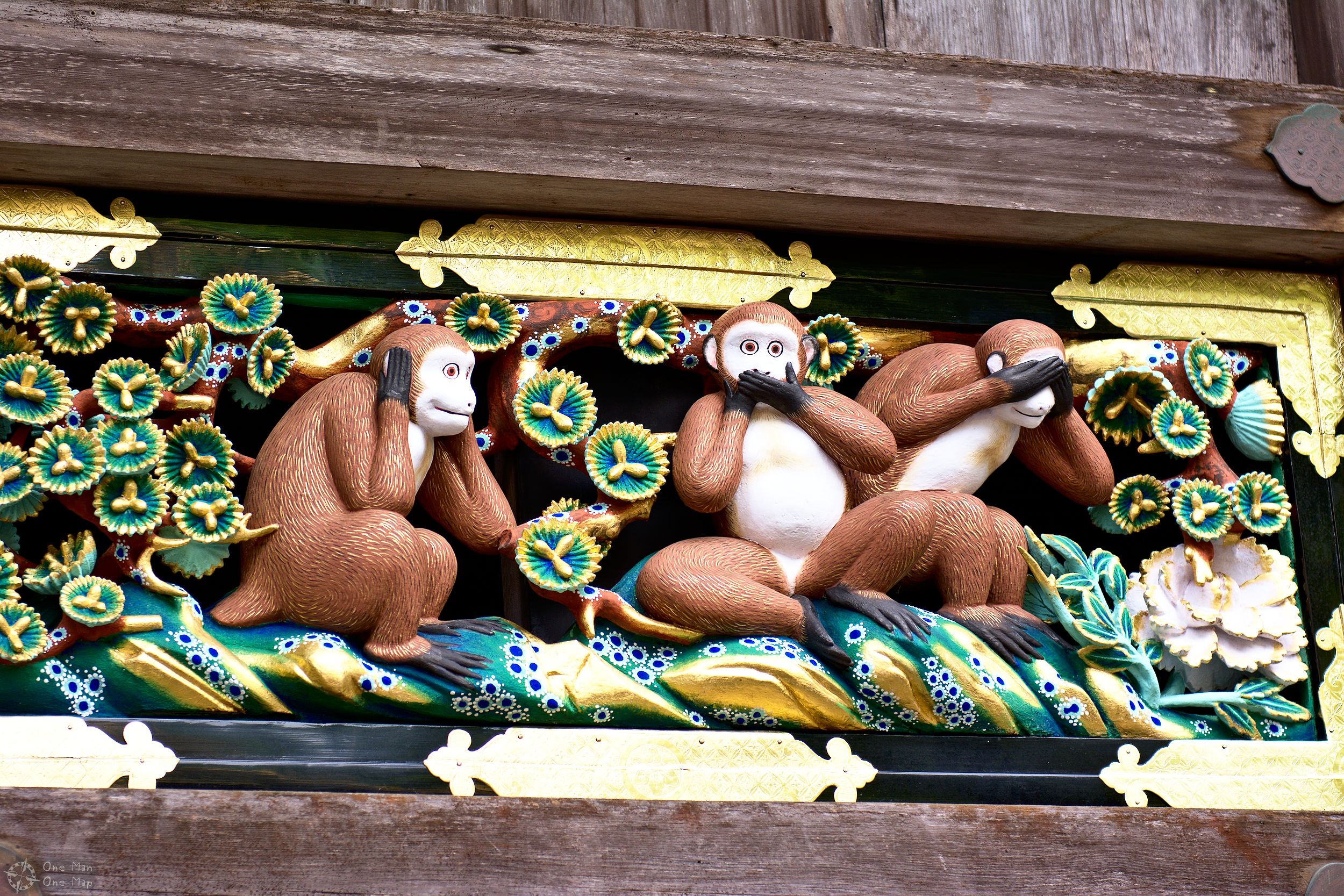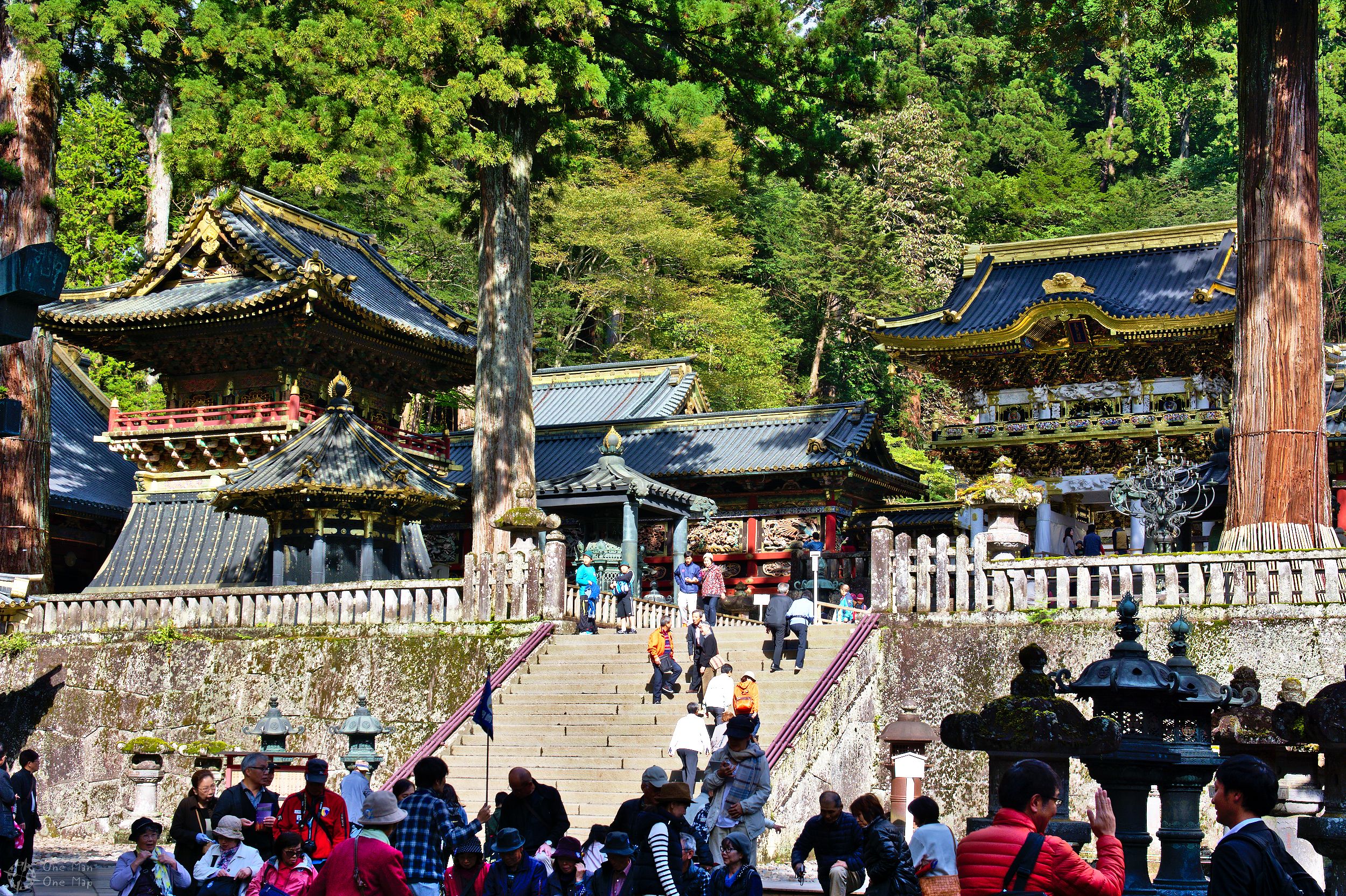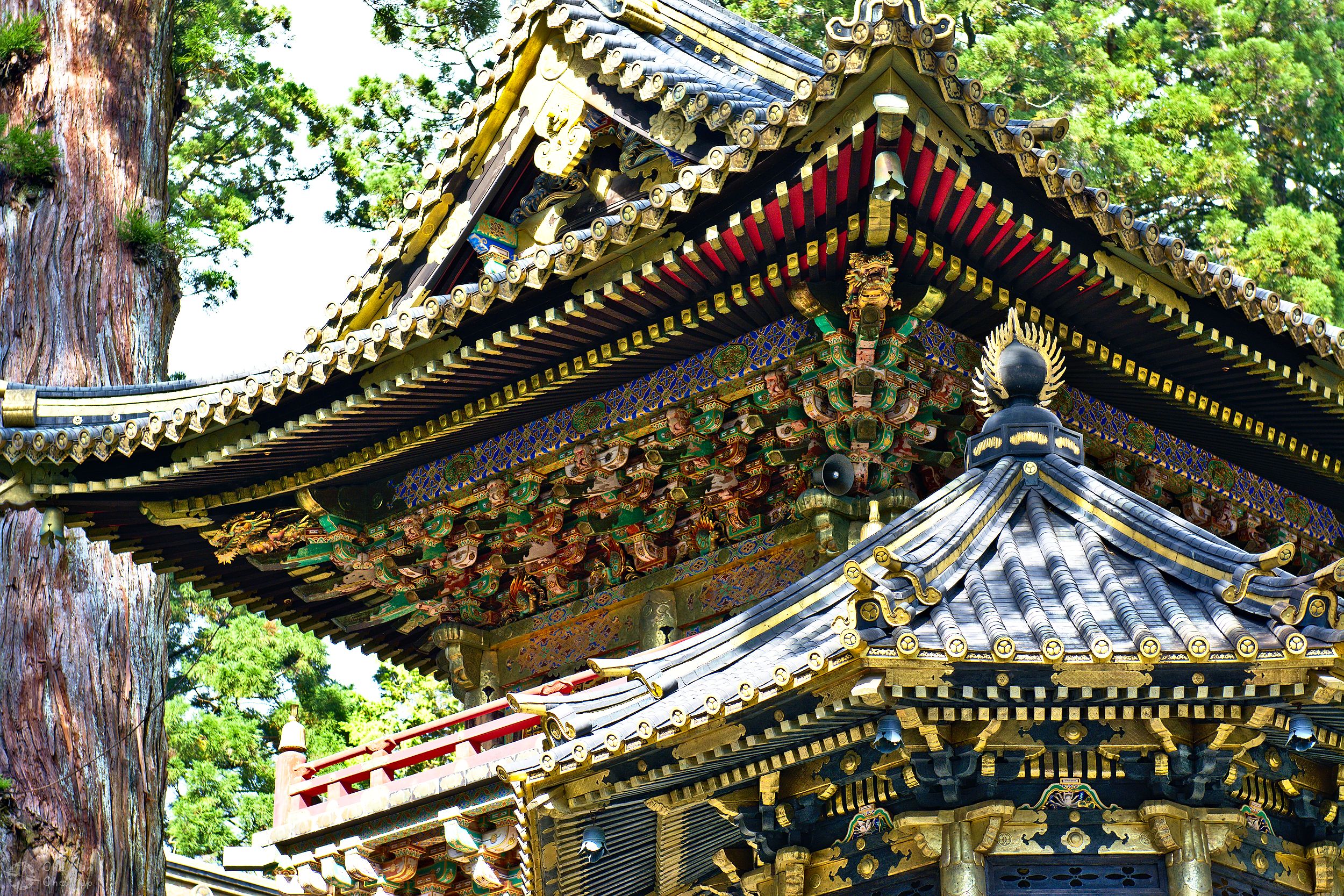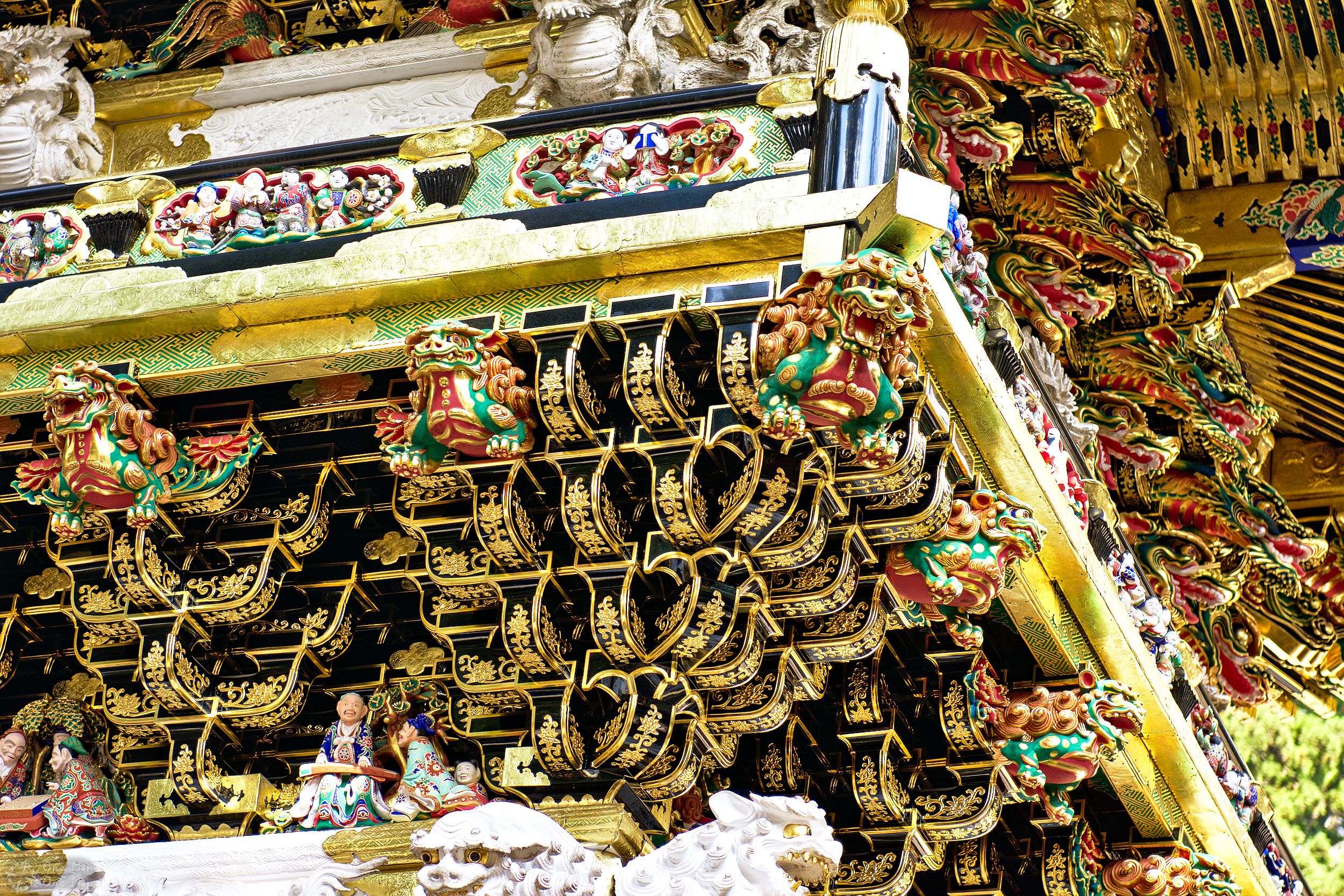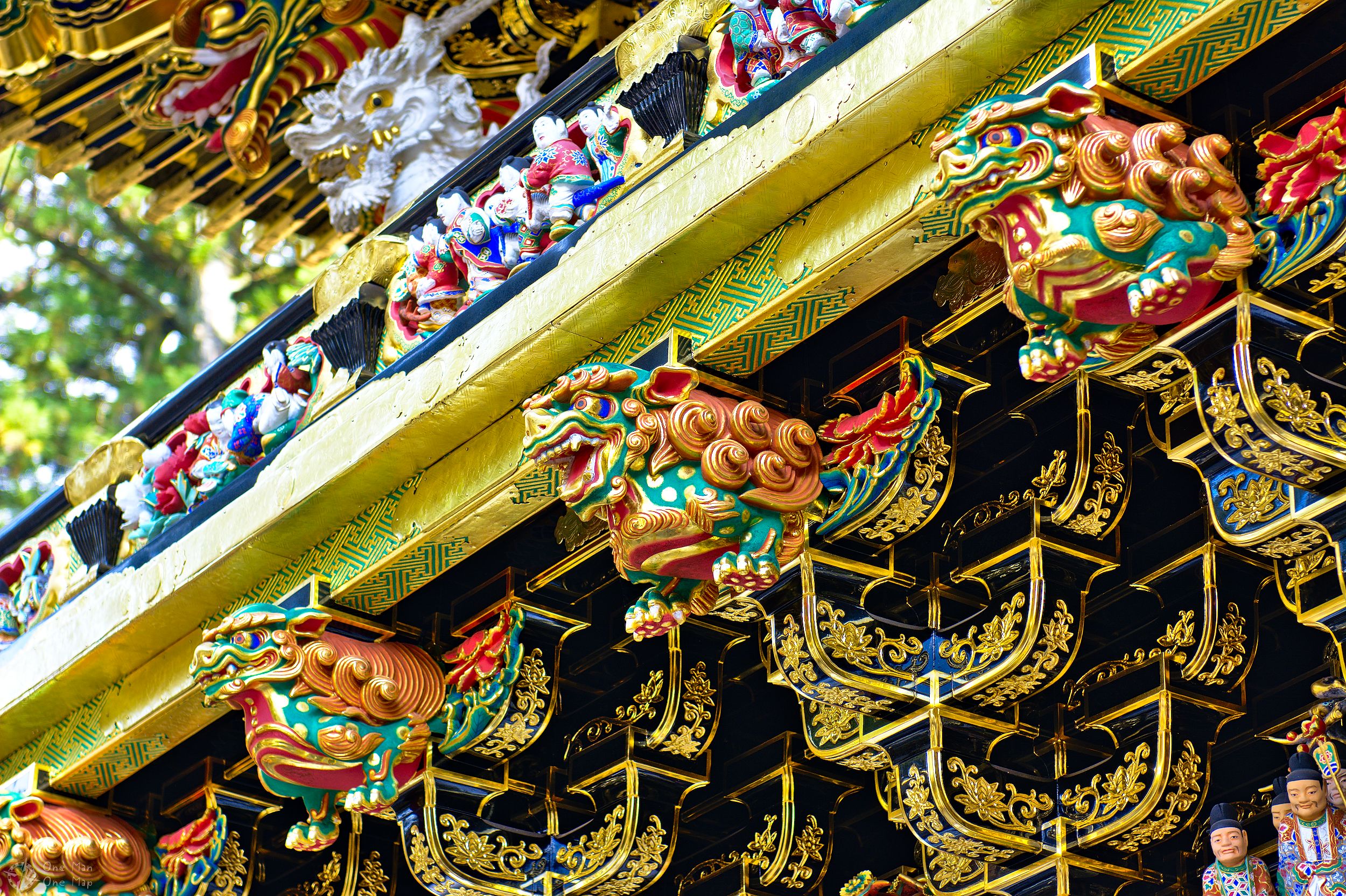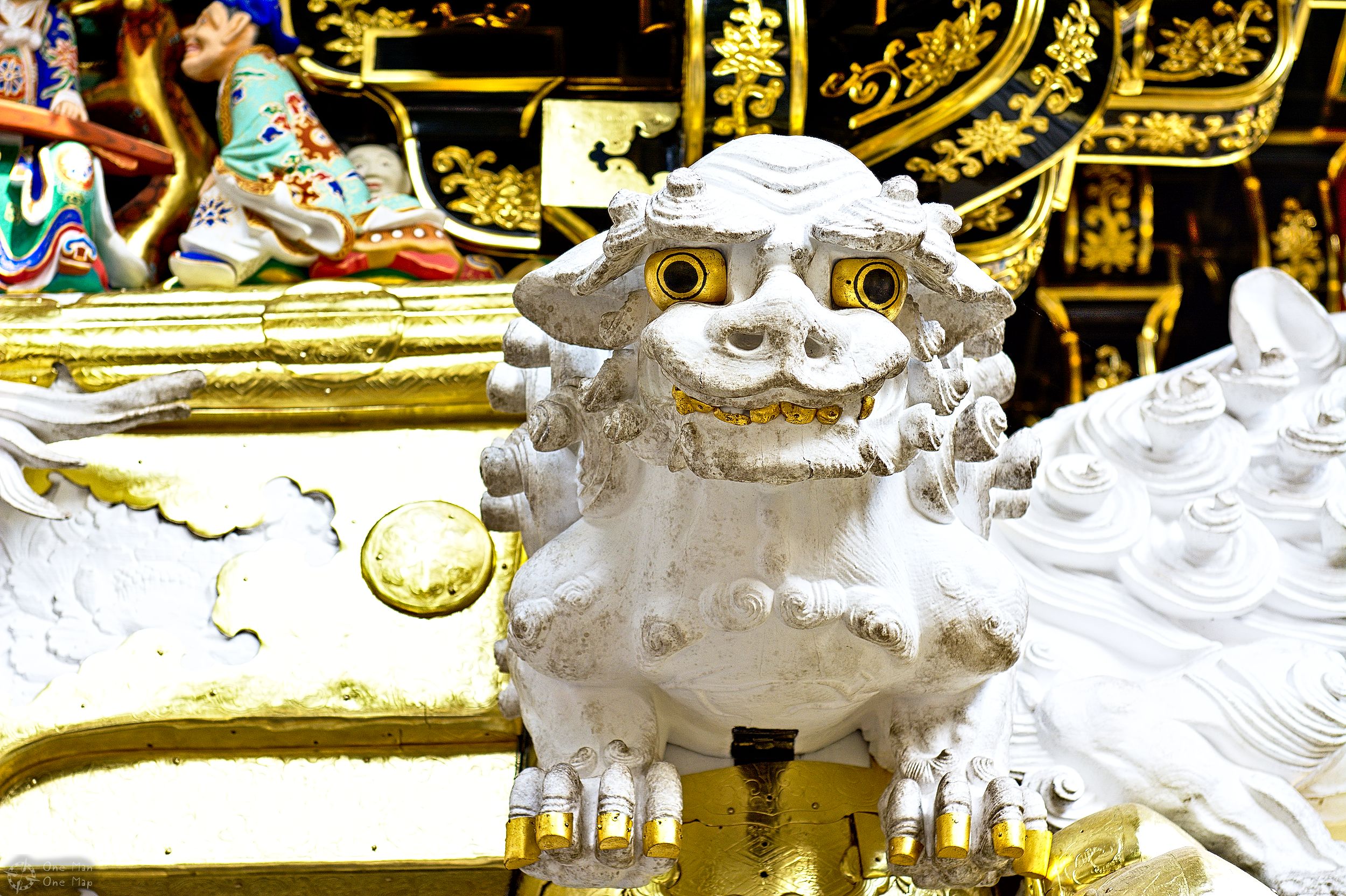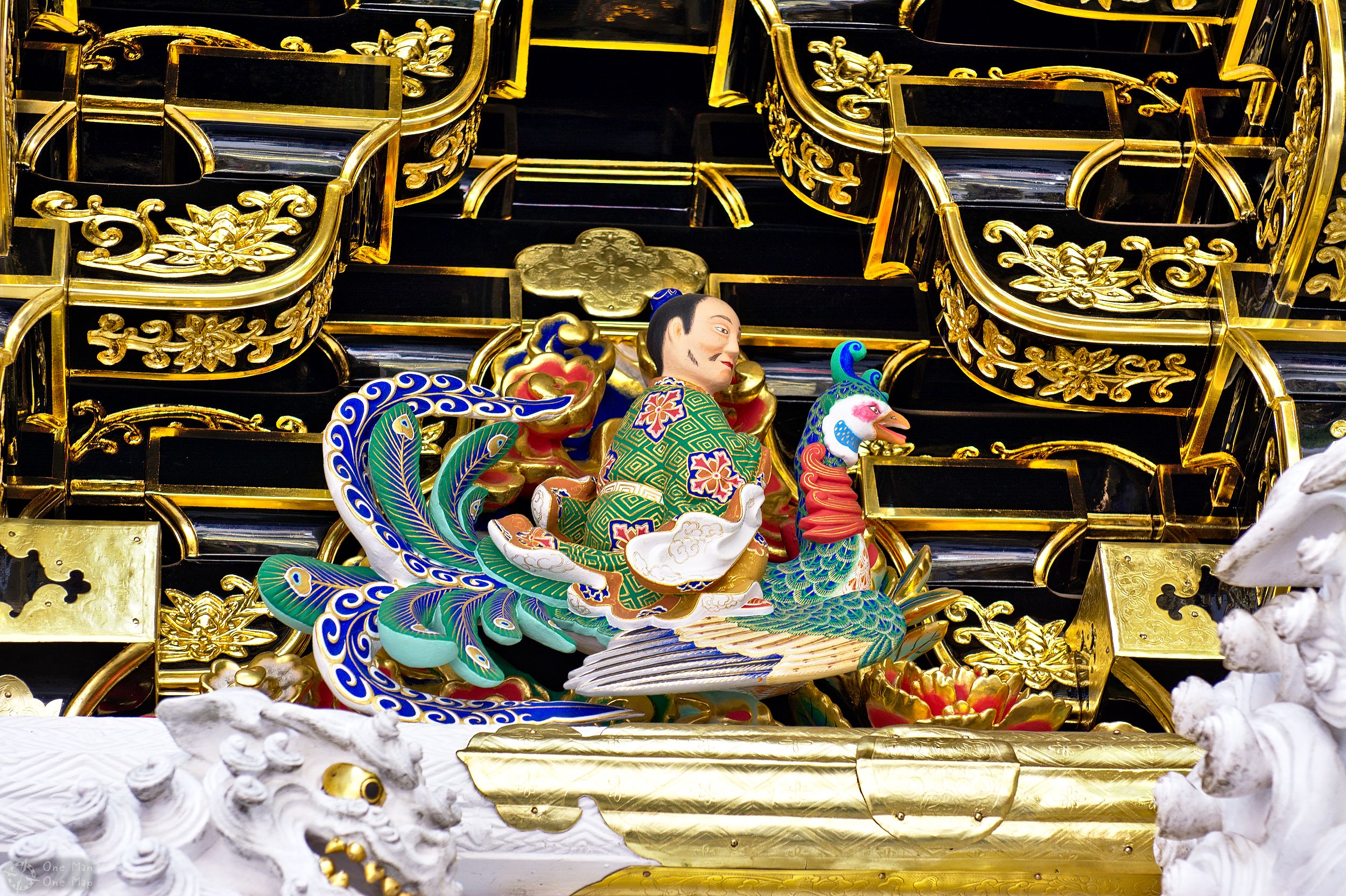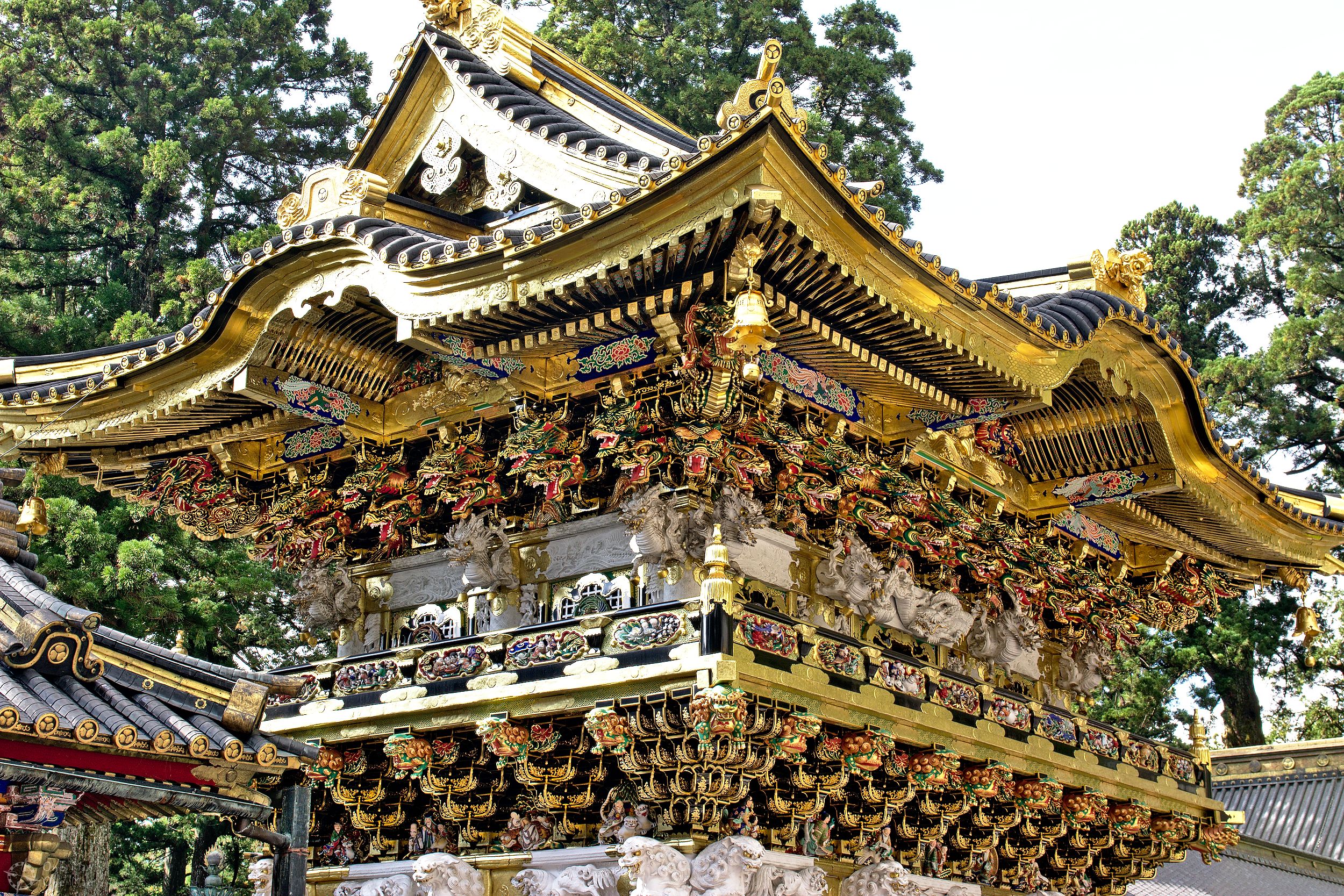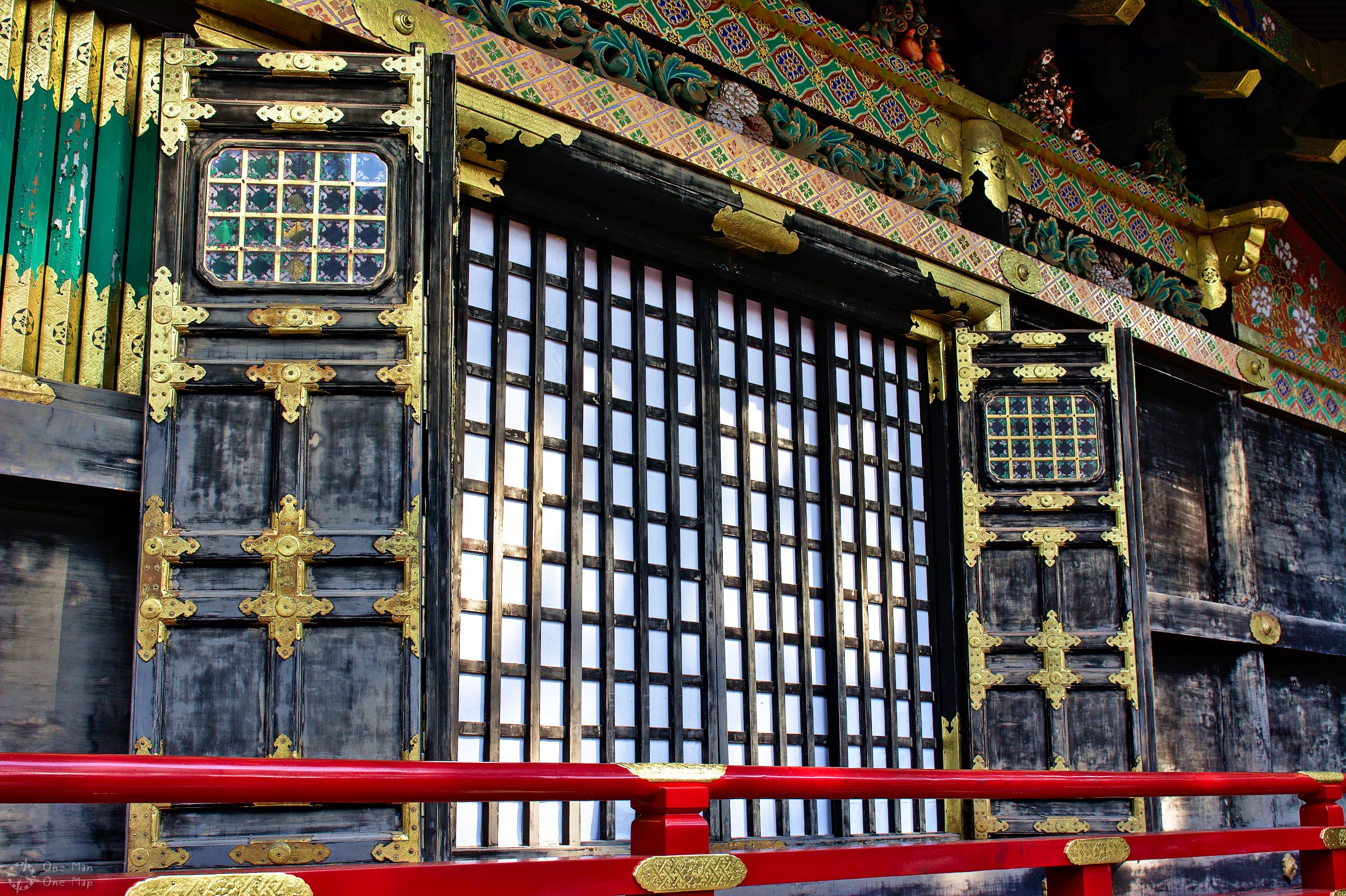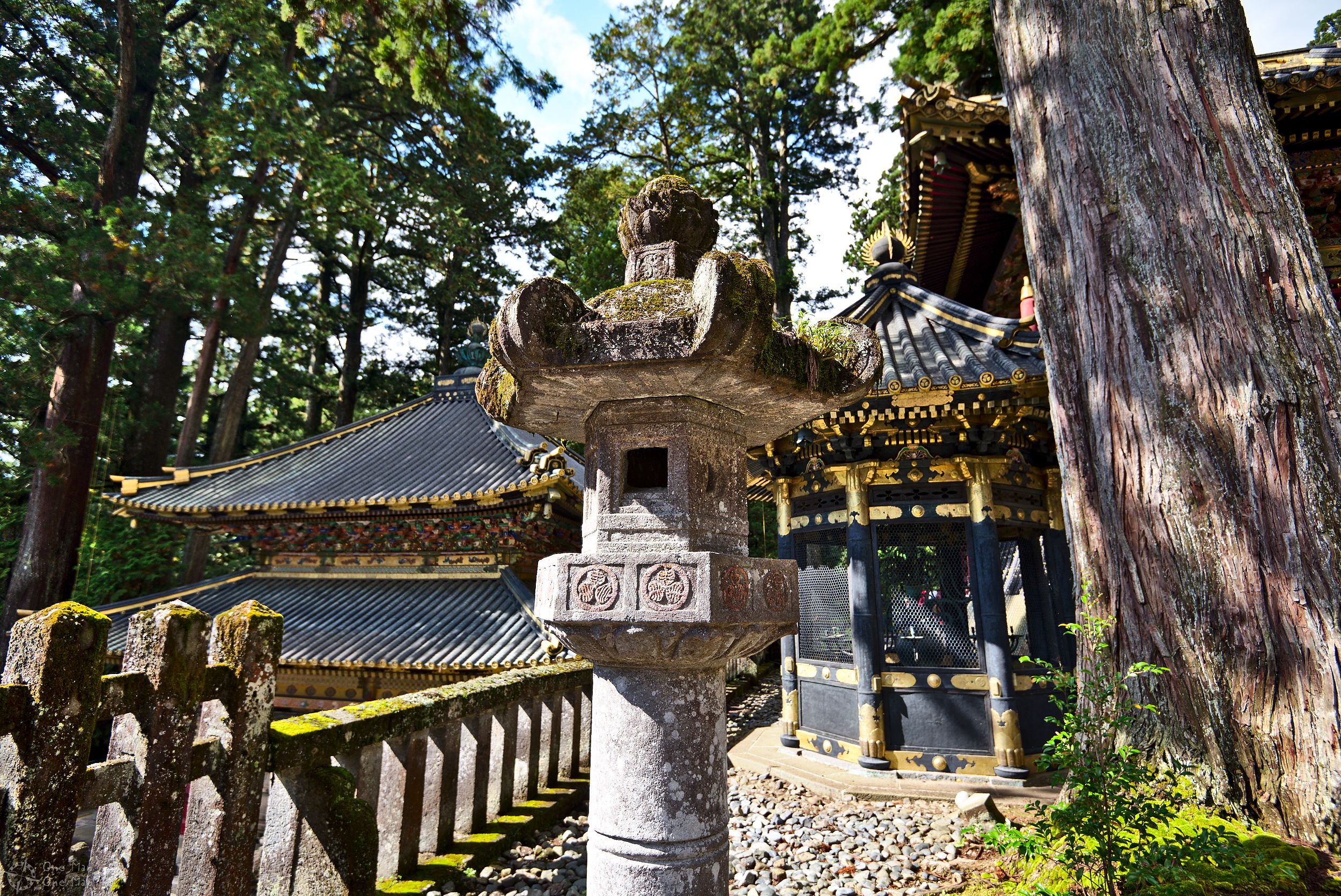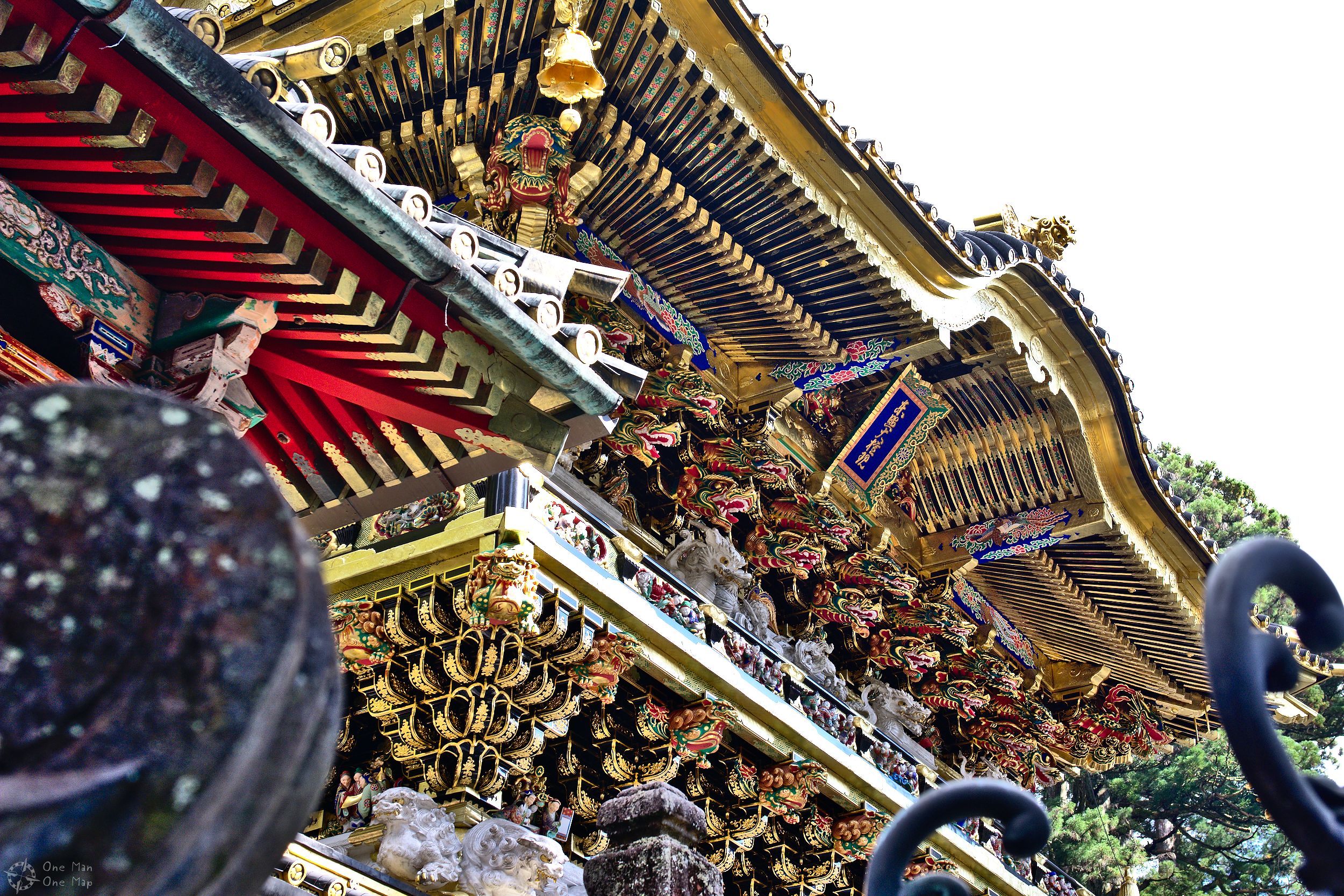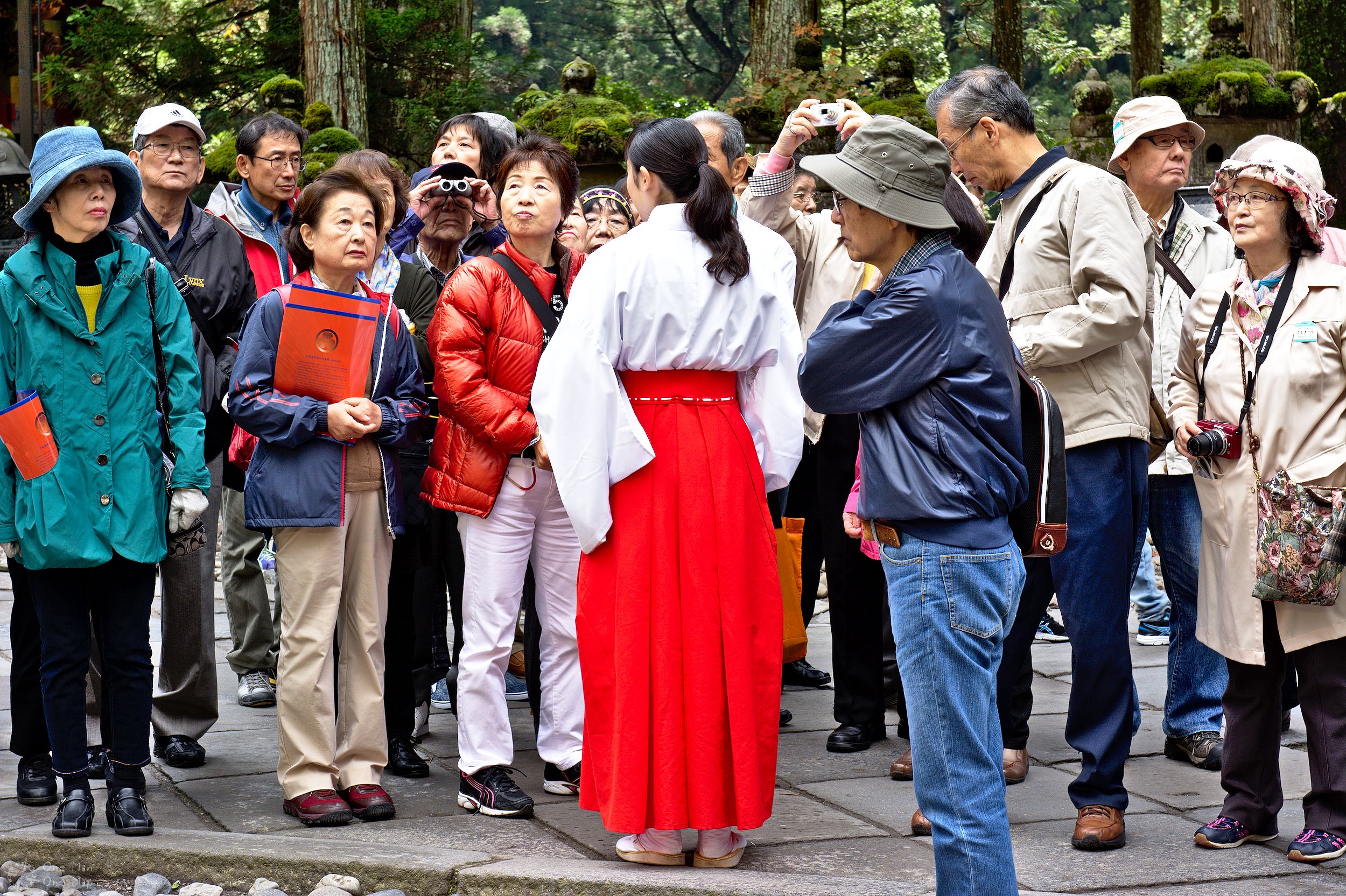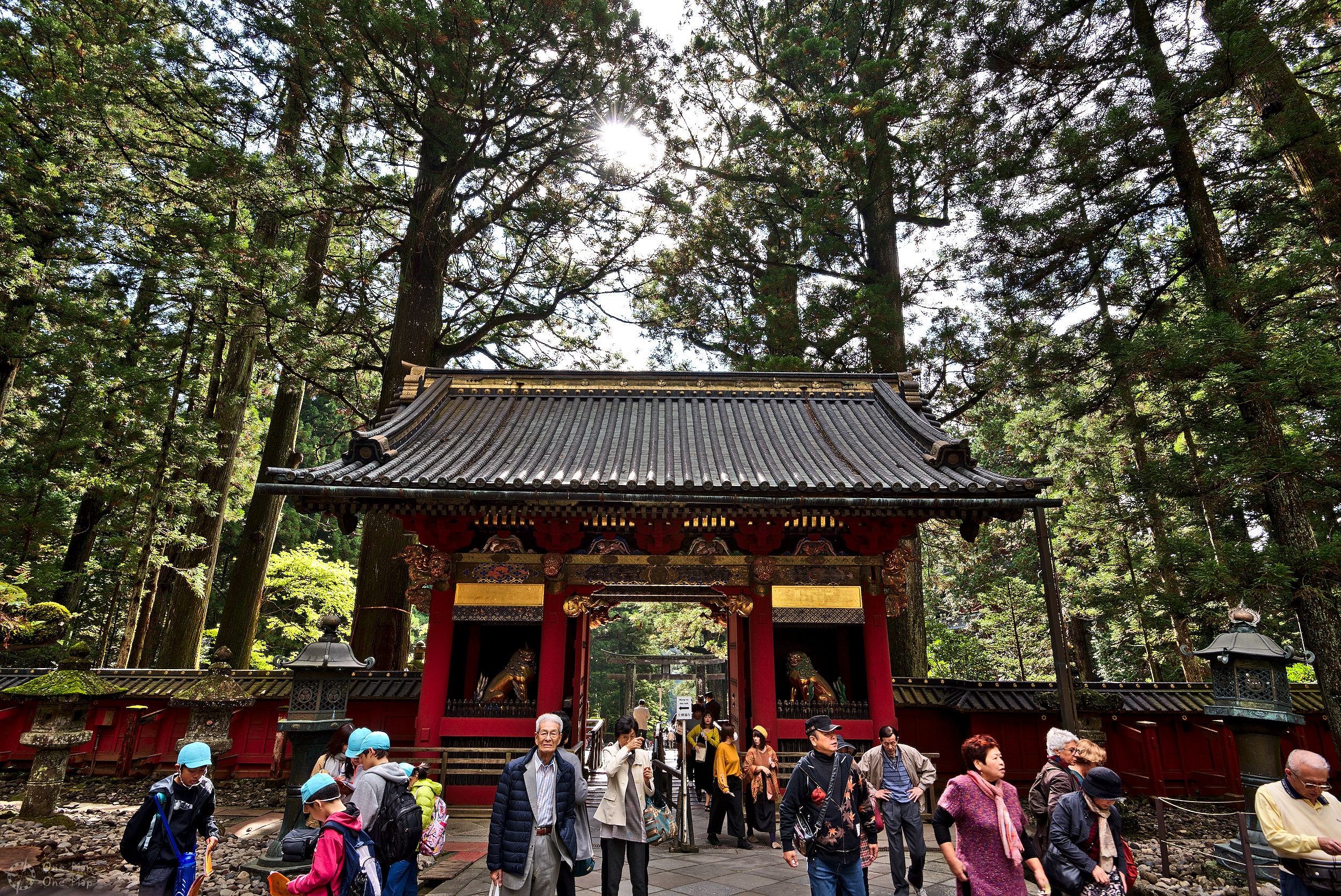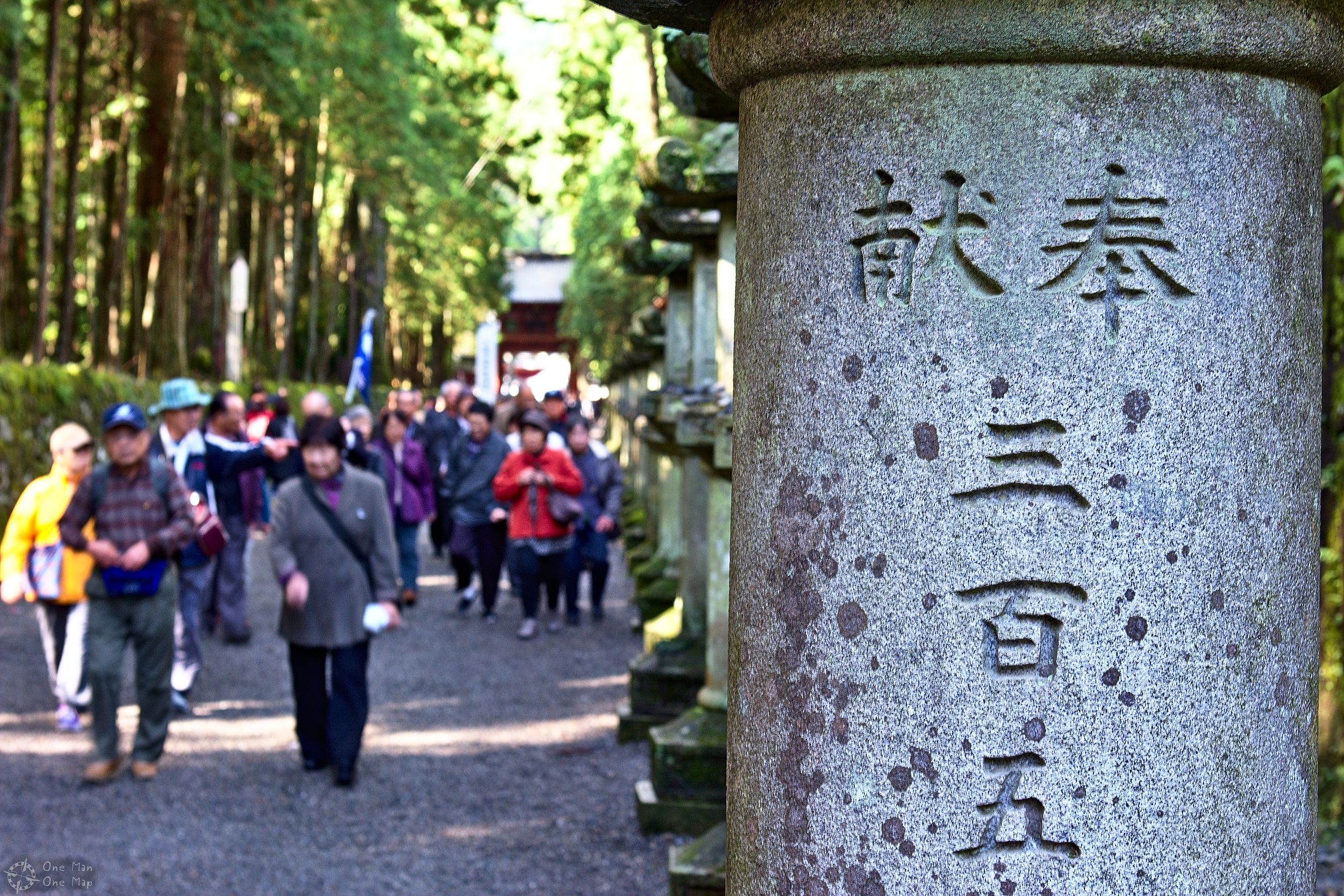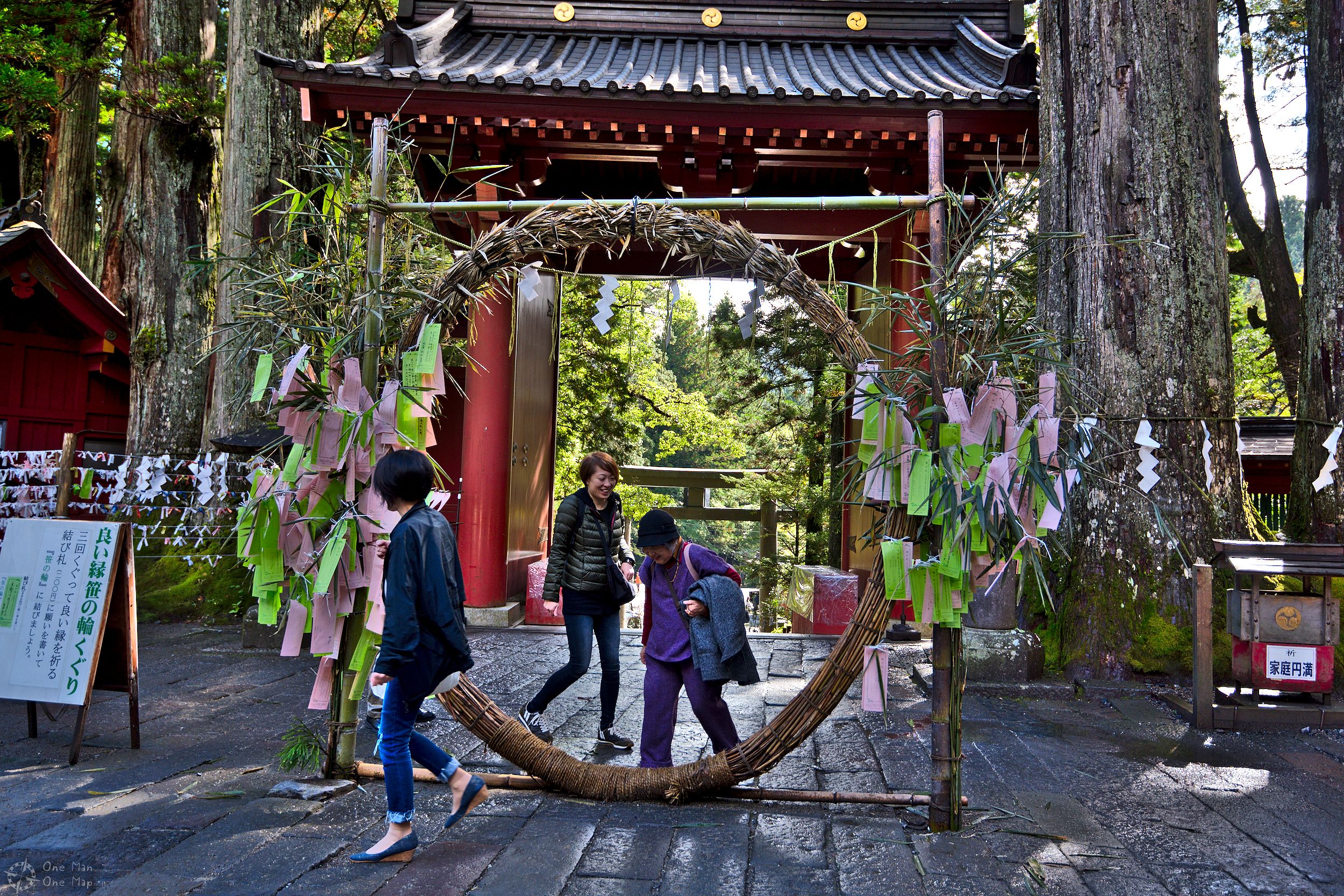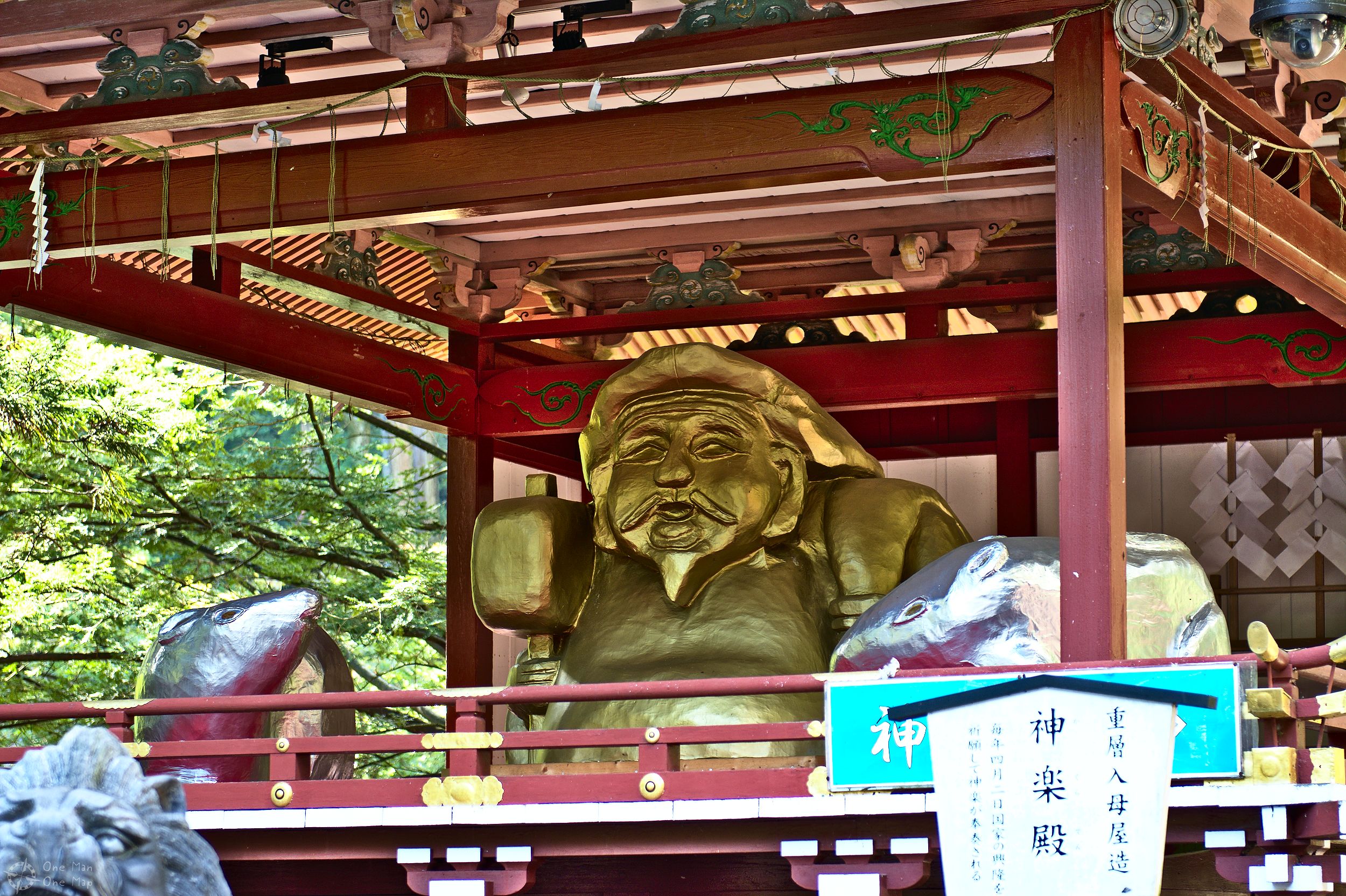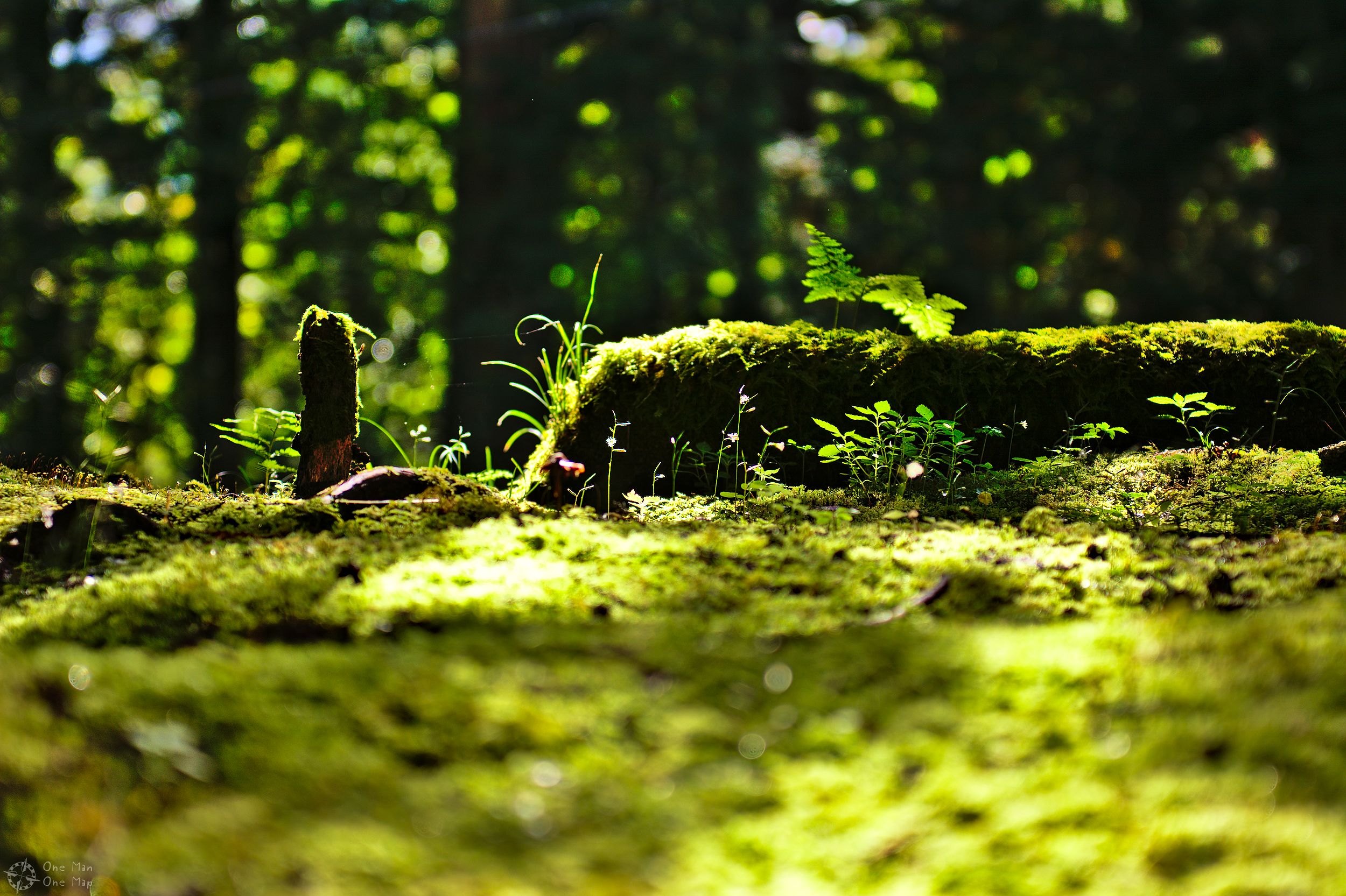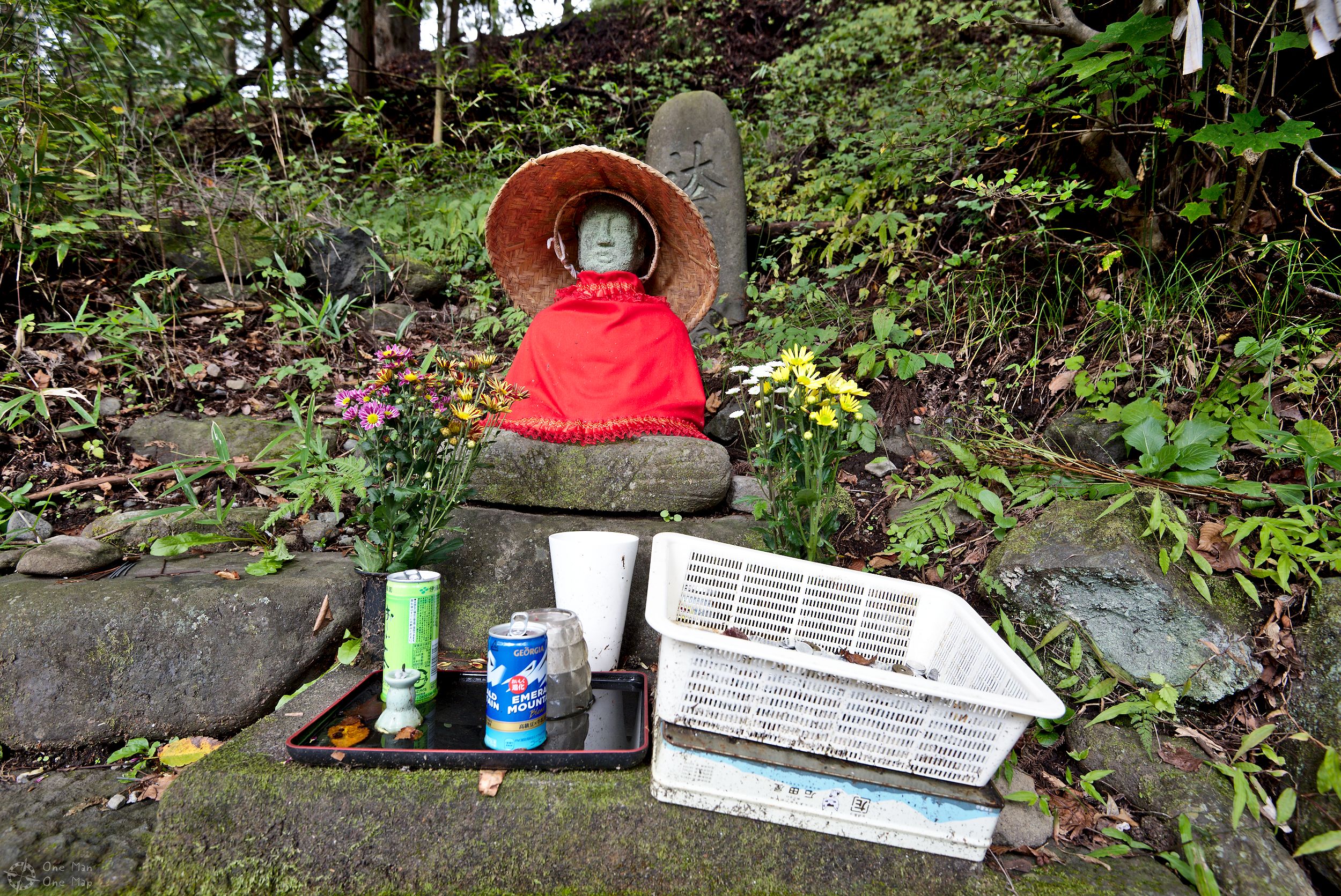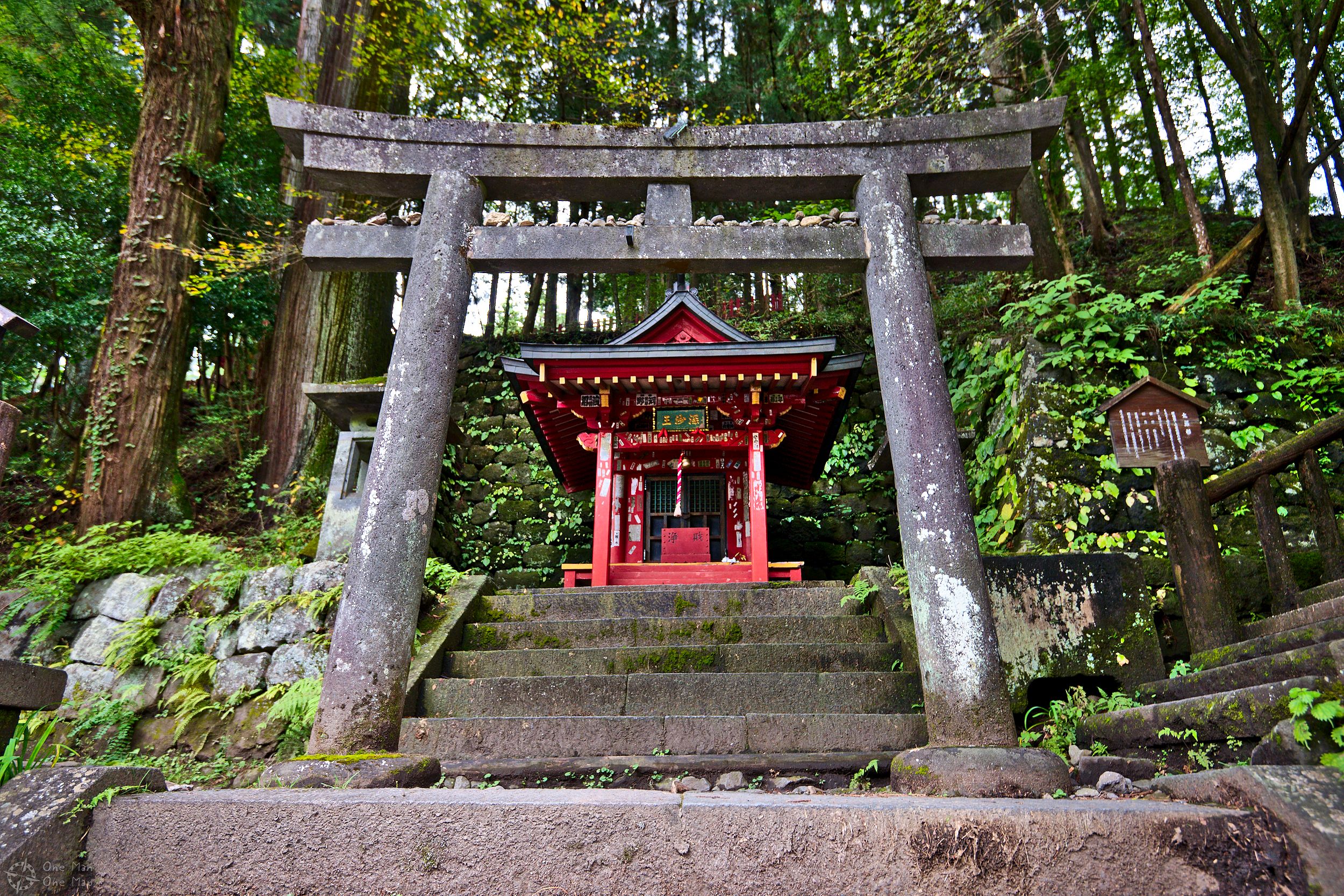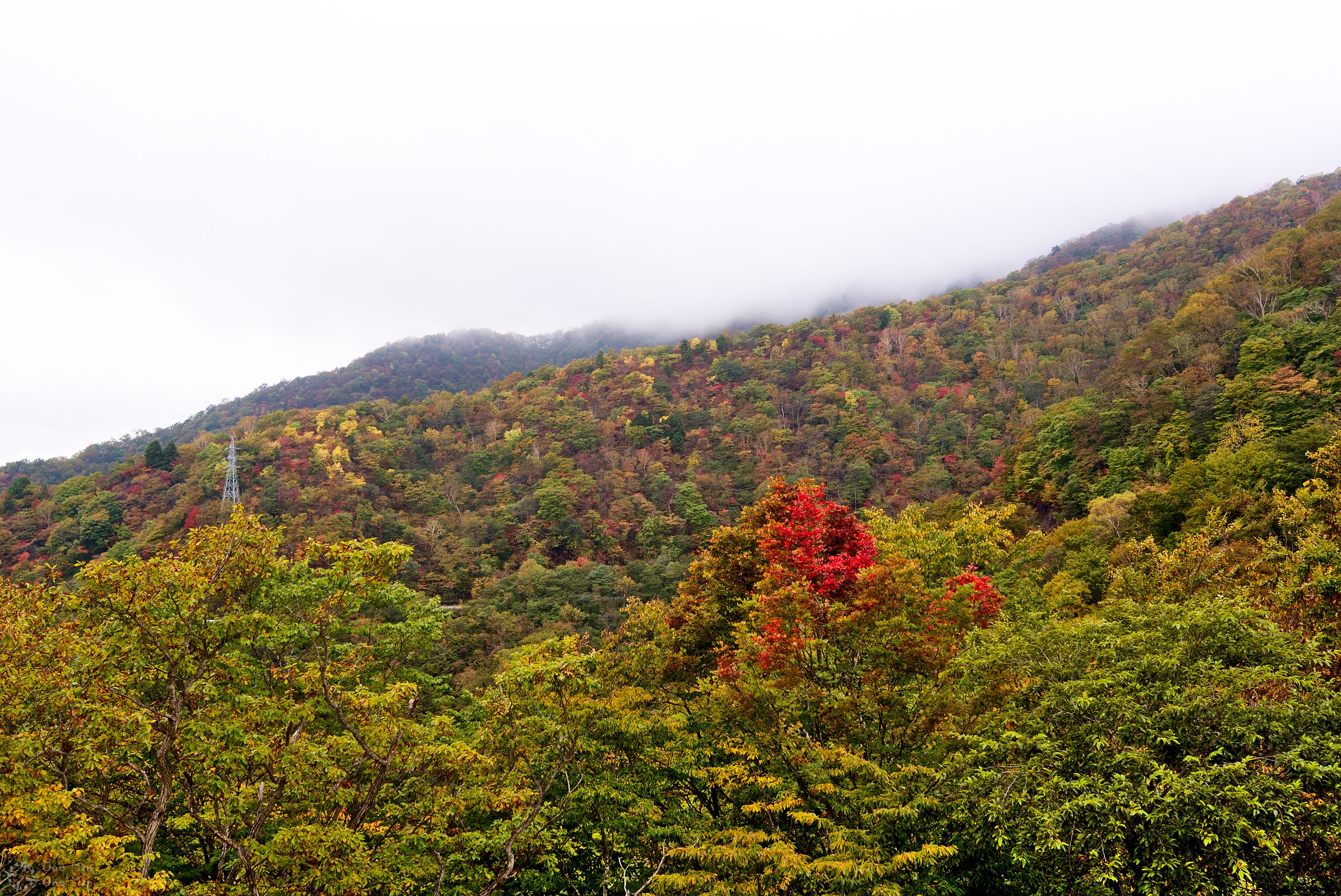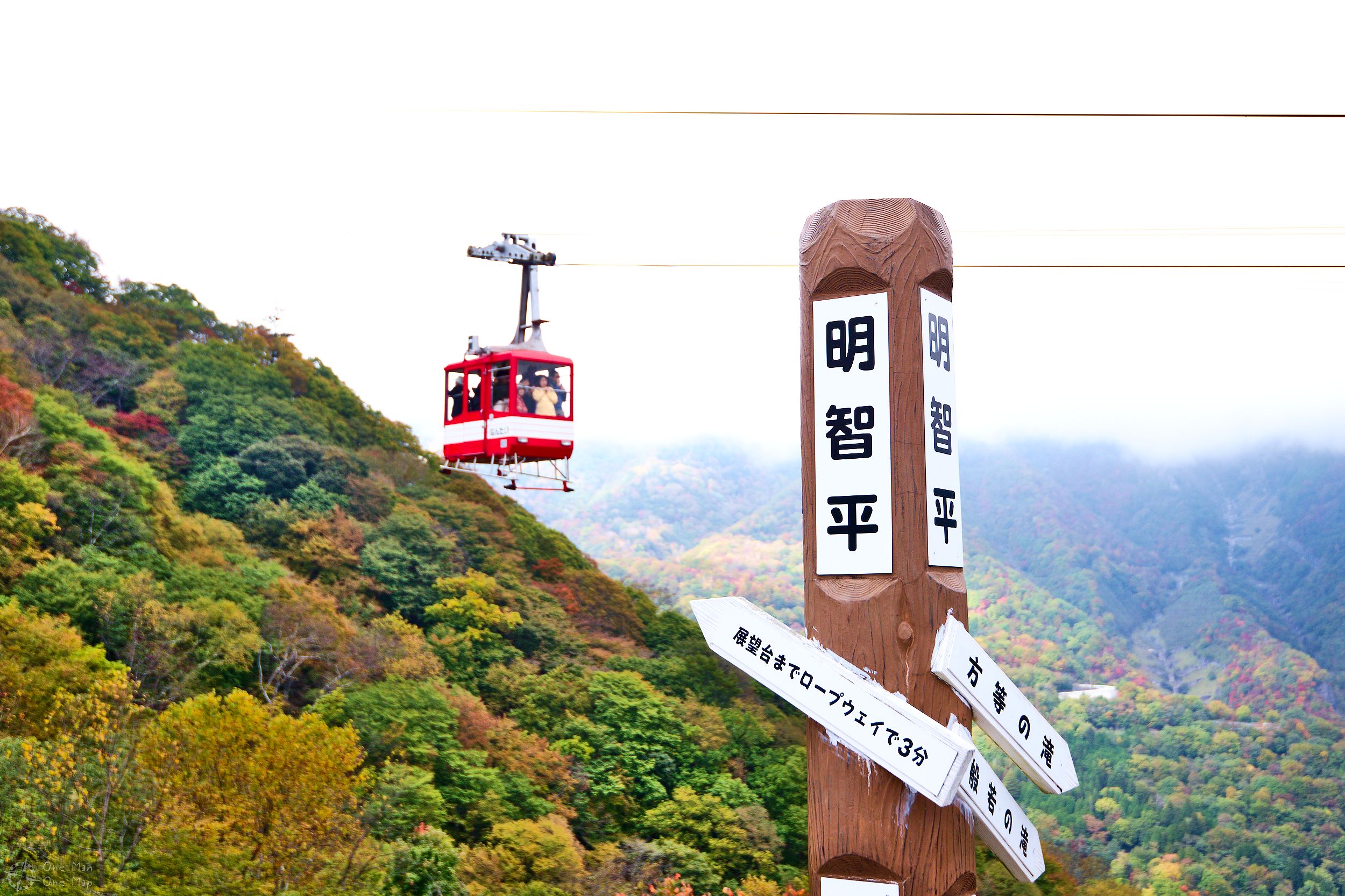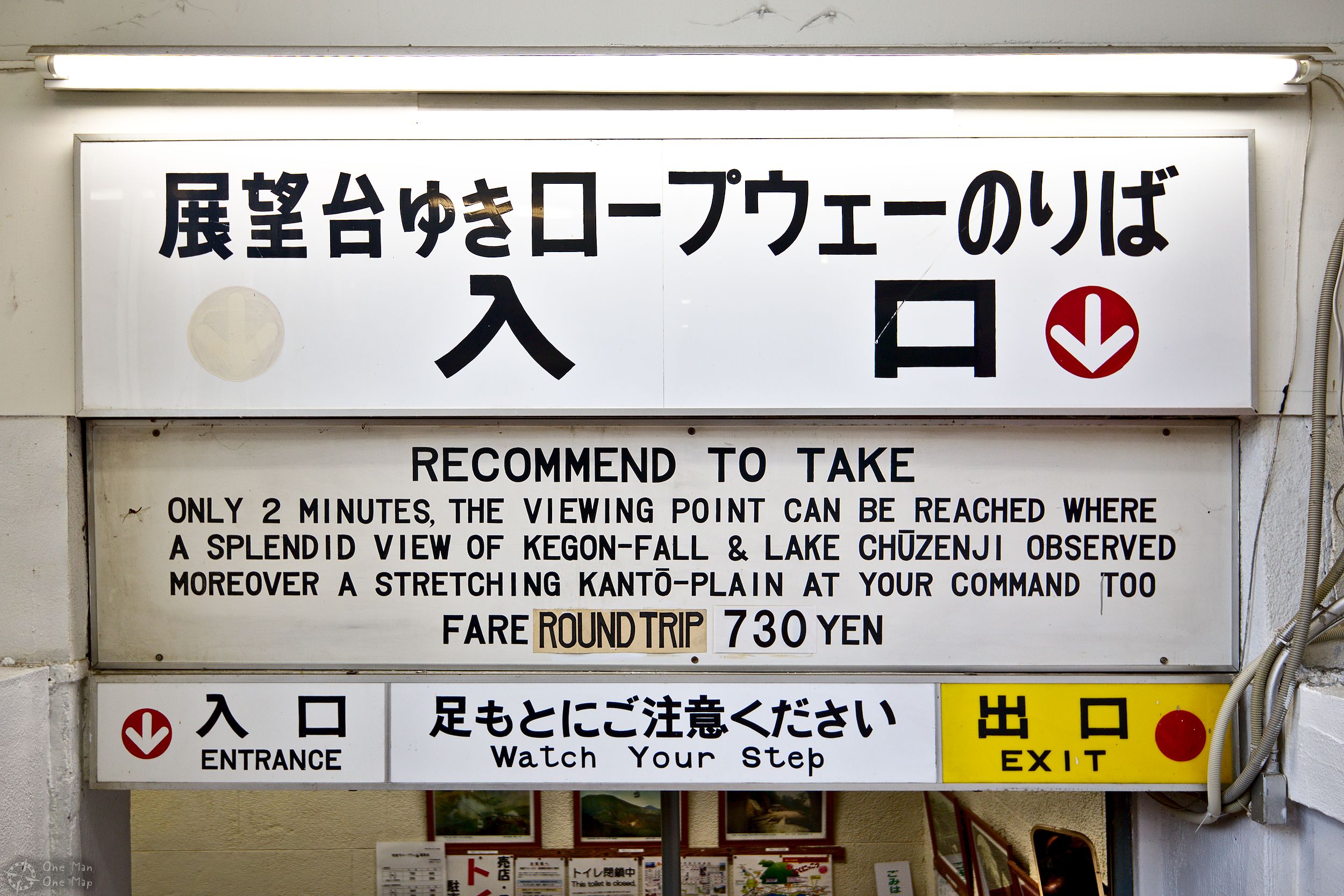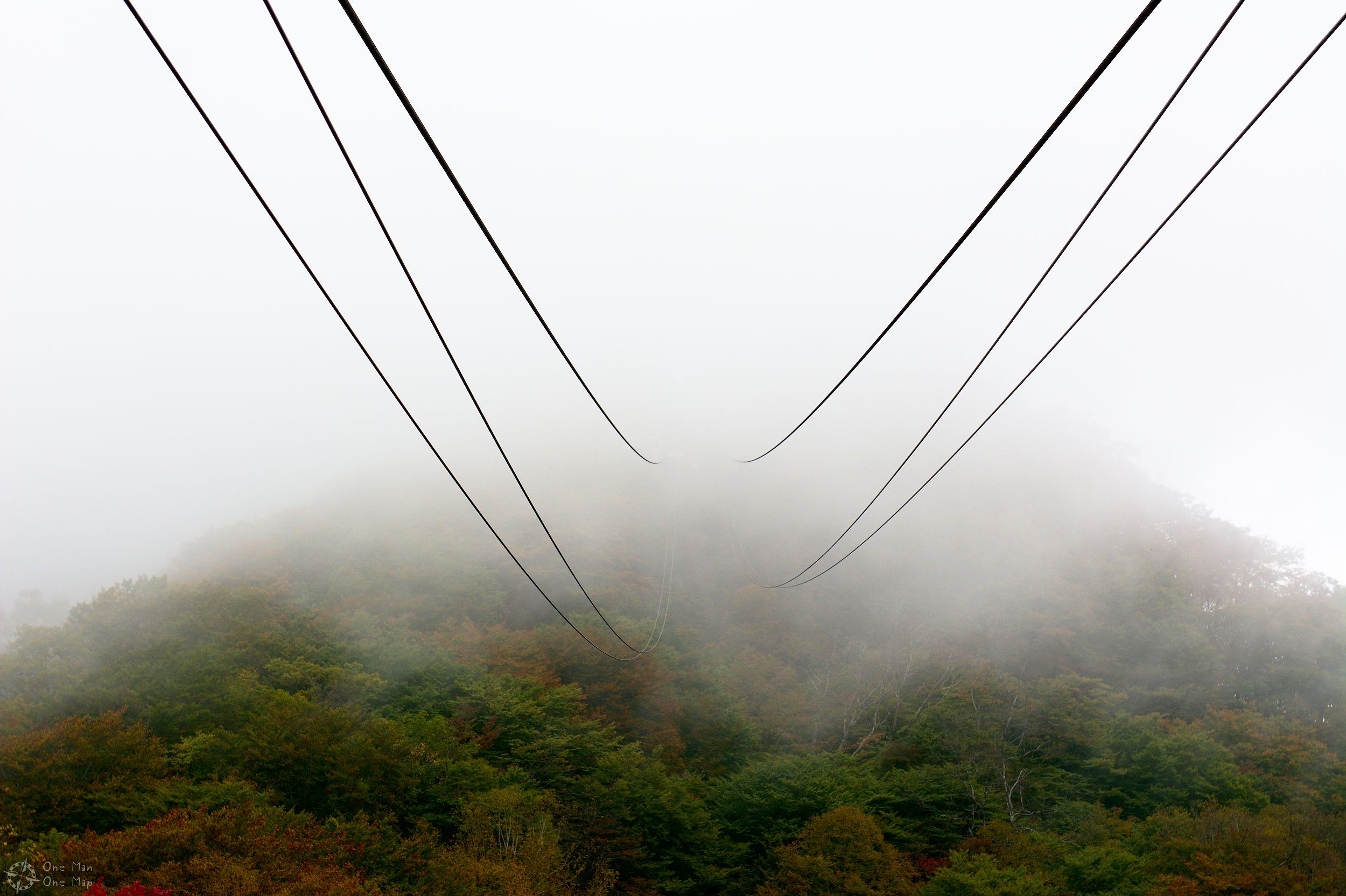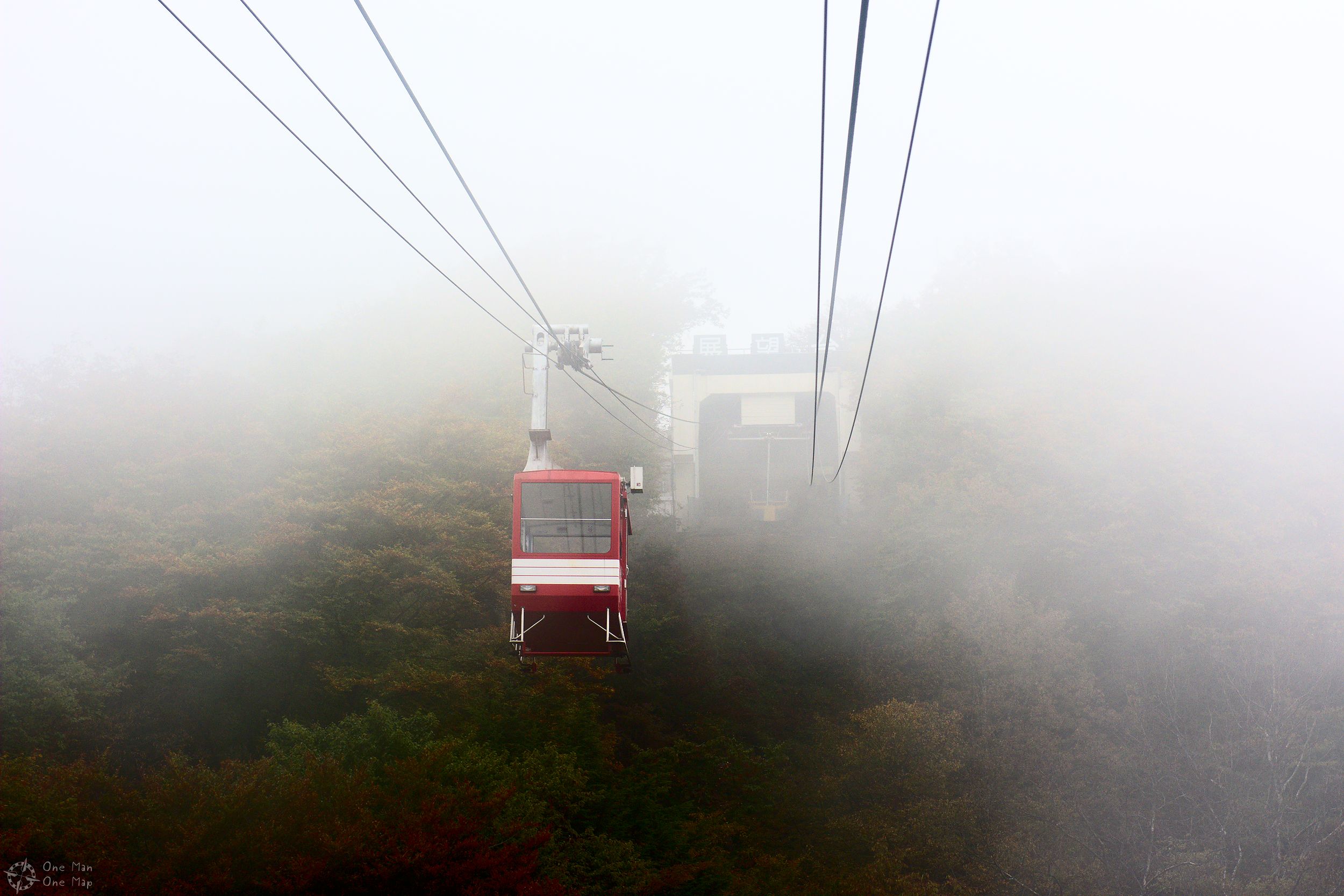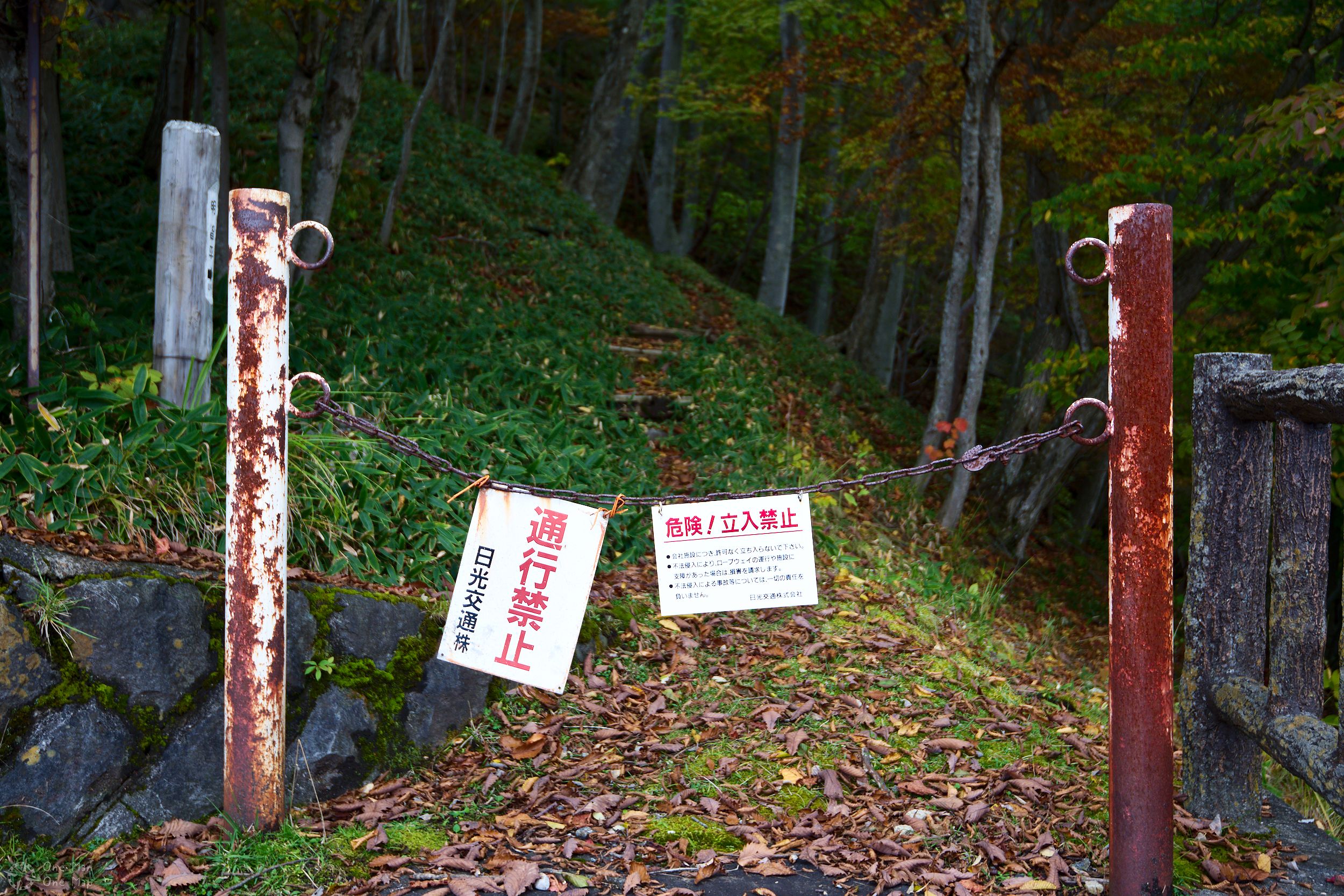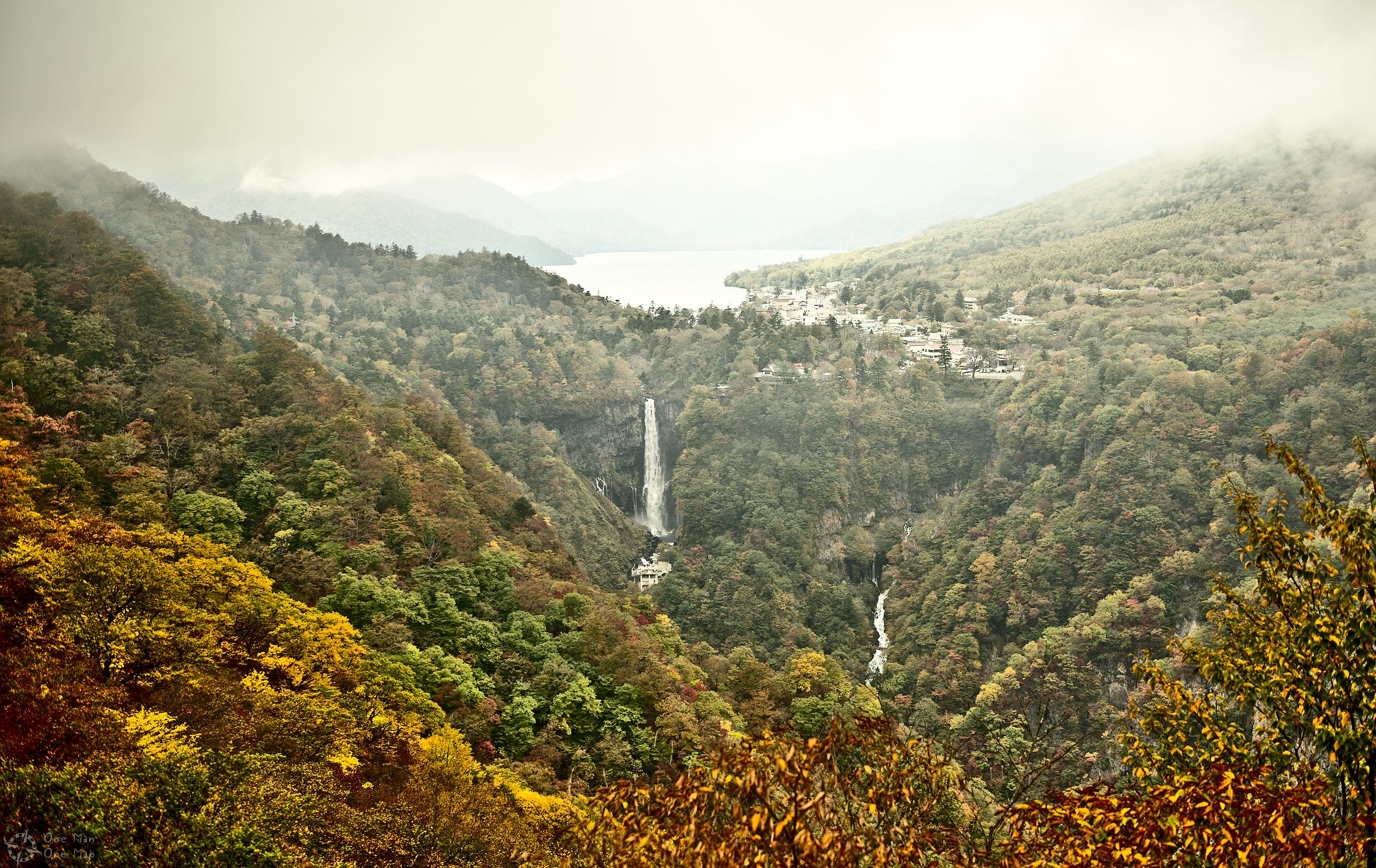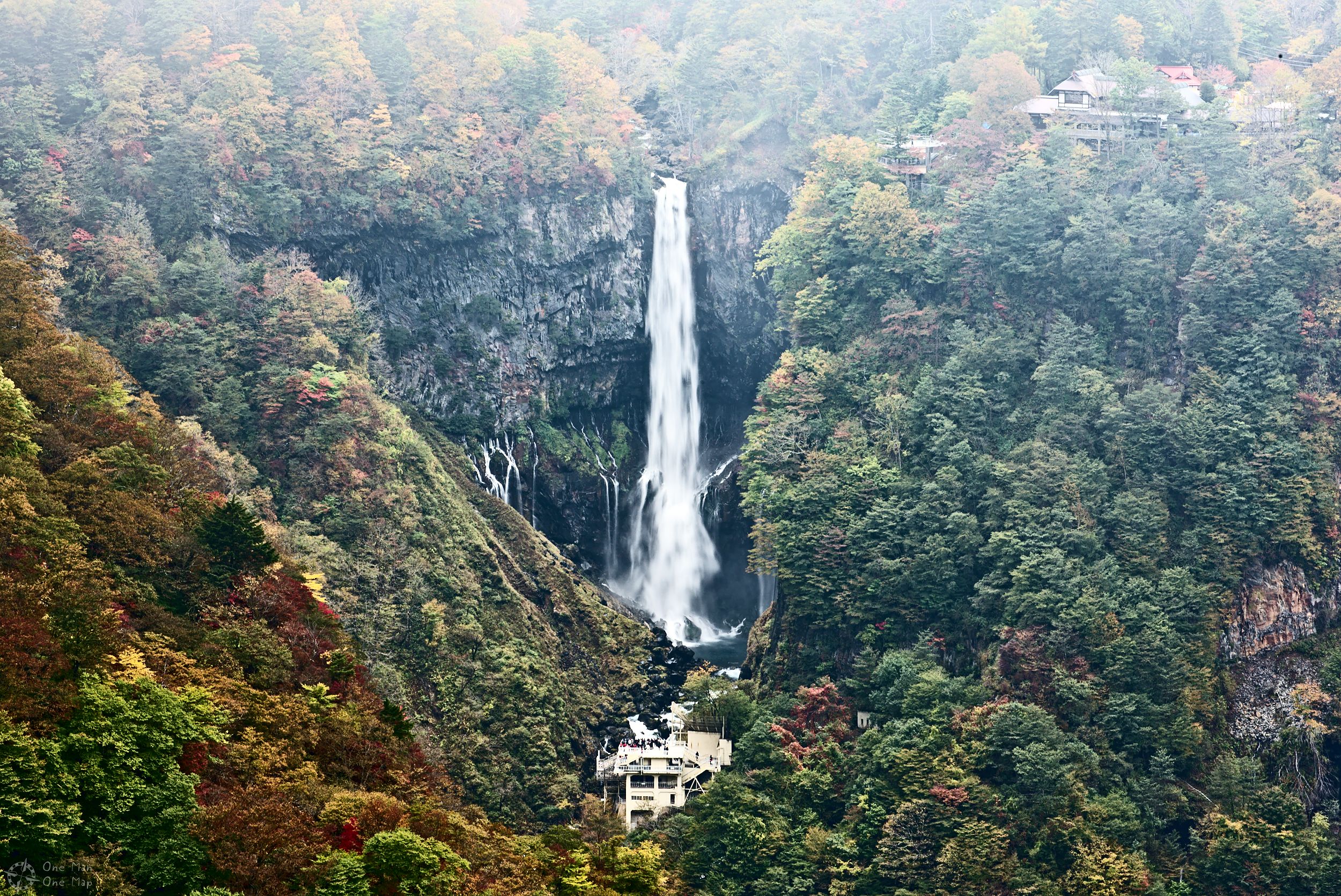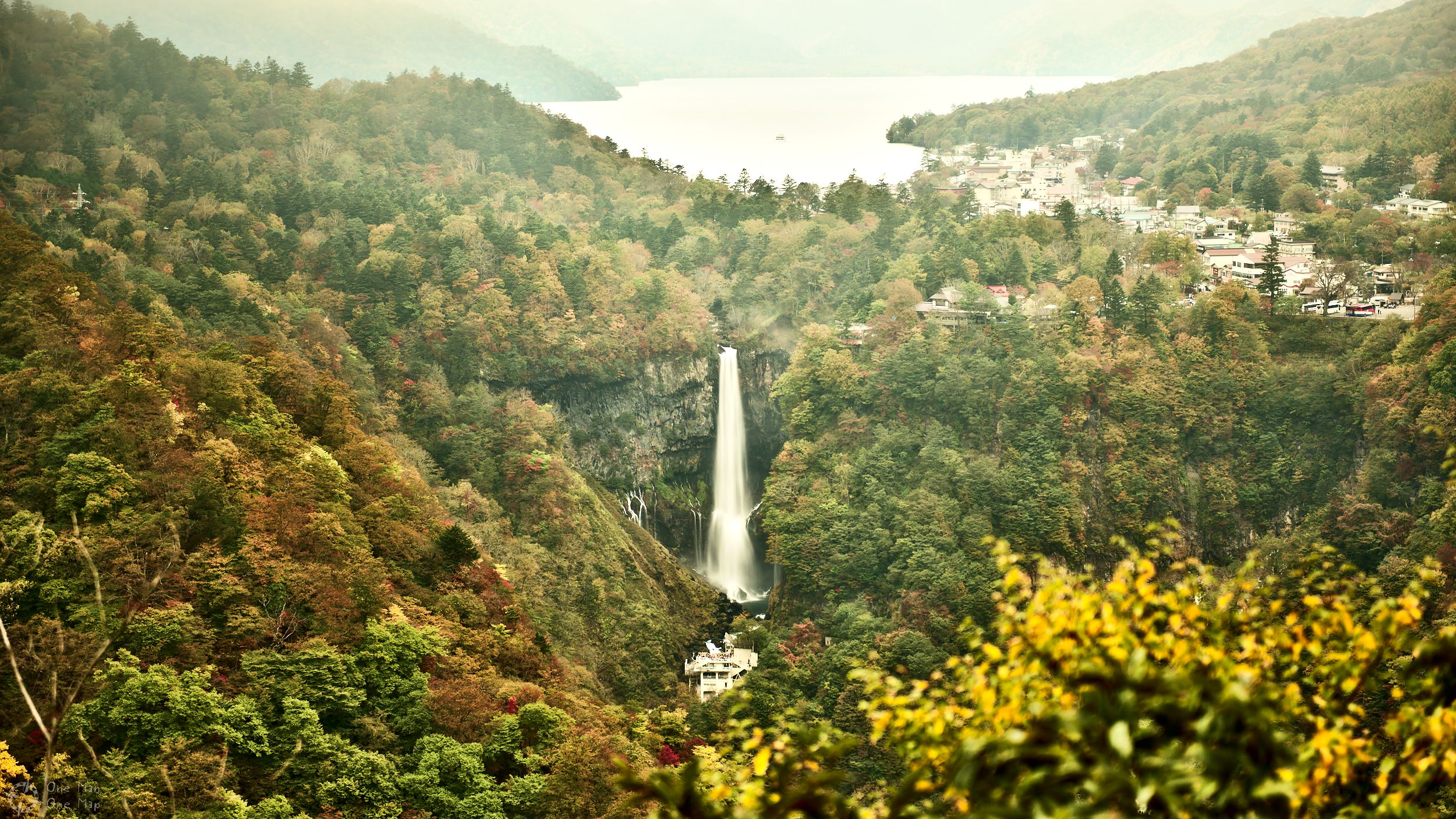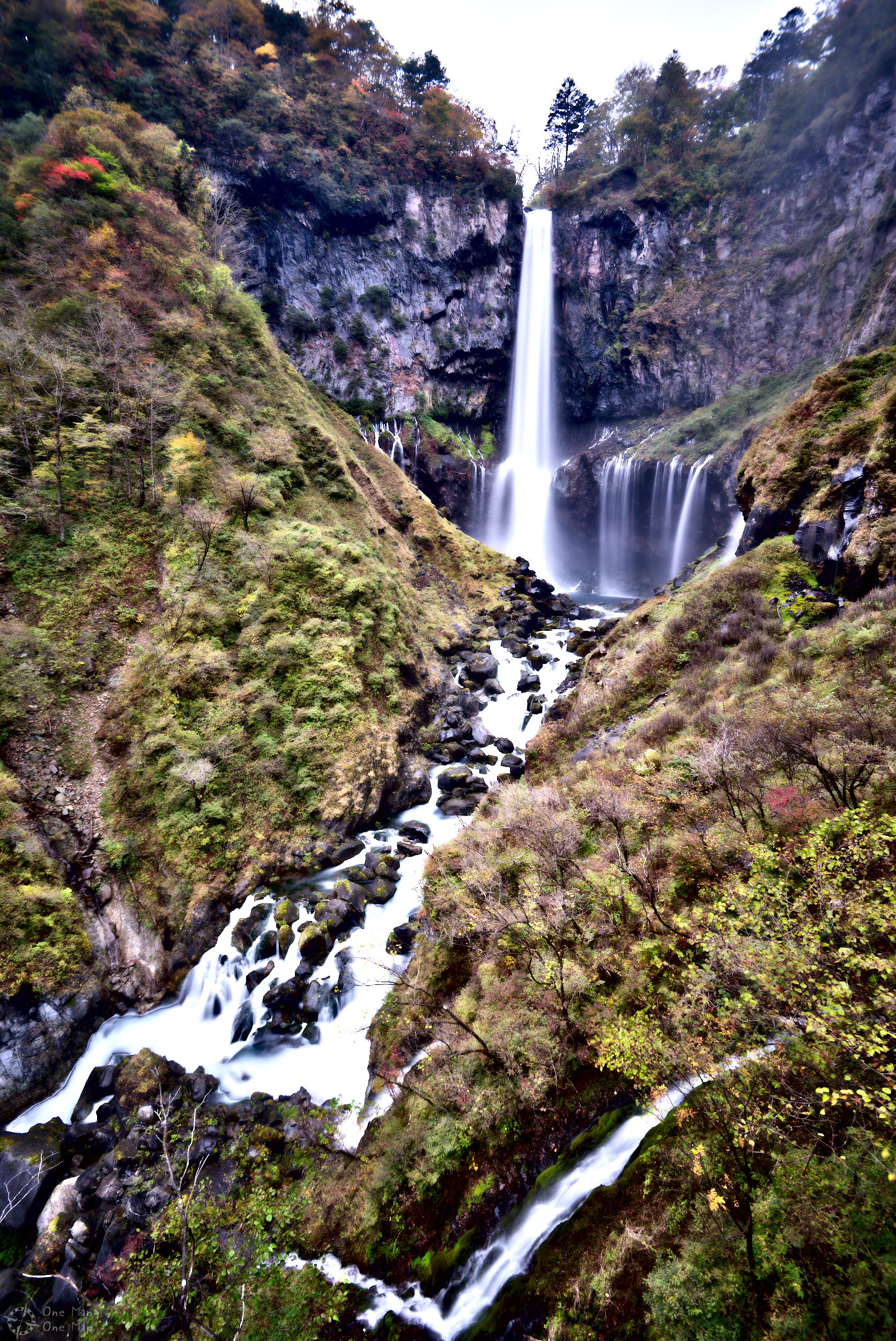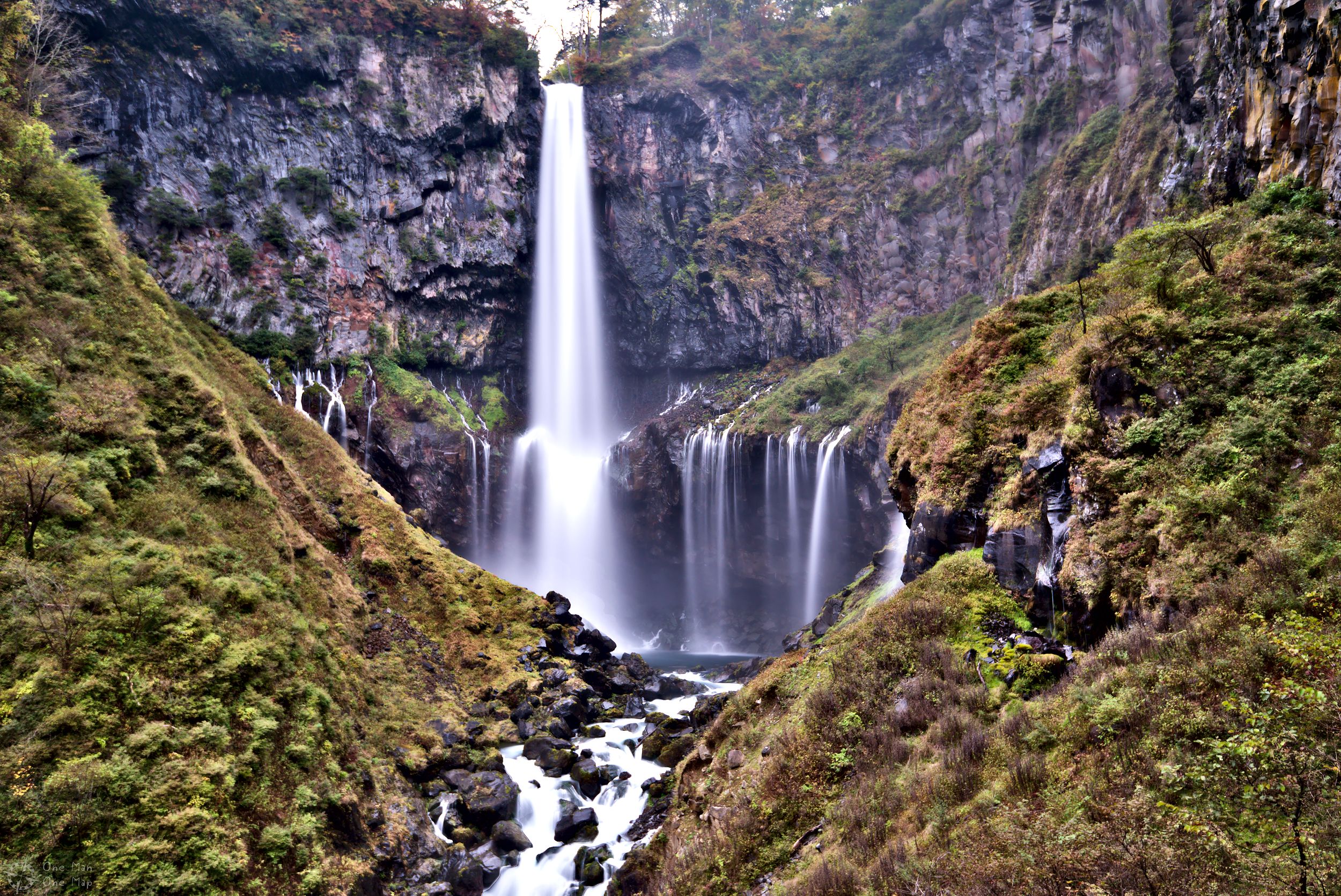Dieser Artikel ist auch auf Deutsch verfügbar. Click here to find out more about Japan!
My route within Japan can be found here.
If you think about Japan, what springs into your mind first are probably completely overcrowded megacities like Tokyo, many islands, large temples, and all sorts of crazy things. Most people also know the sacred mountain Fuji-san, but did you know three-quarters of the country are made up of mountains? There are more than twenty 3000-meter peaks! The main reason for the population density being so high in Tokyo, Kyoto, Osaka and the few other major cities is not that the Japanese like it snug and cuddly – there is simply not enough usable building land for the 127 million inhabitants.
In addition to the region around the still active Hakone volcano there are many other interesting places in the mountains. This includes Nikkō (日光 市) in Tochigi prefecture (栃木県), a town more than 1,200 years old and about 120 kilometers from Tokyo. The journey is best made by train. Nikkō cannot really be called a “city”, its almost 85,000 inhabitants live so far apart from each other that the population density is at a very low 58 people per square kilometer. That’s 106 times less than in Tokyo … 😯
Nikkō was formed in 780 AD around some important tombs and temples which are mainly located in the surrounding forests. These include the Nikkō Tōshō-gū (日光東照宮) shrine with the mausoleum of Shogun Tokugawa Ieyasu (徳川家康) and his grandson Shogun Tokugawa Iemitsu (徳川家光), the Futarasan jinja (二荒山神社) shrine with the famous red bridge, and the Rinnō-ji (輪王寺) shrine. Some people even say “日光を見ずして結構と言うな” – “Don’t talk about beauty before you’ve seen Nikkō” because everything here is so beautiful.
All in all there are so many temples, complexes and other attractions in Nikkō that there is even a special circle bus line which the tourists can use to transfer between them. And depending on the season there are very many tourists.
Hyakumono-Zoroe Sennin Gyoretsu, the Parade of the 1000 Samurai
The Tōshō-gū Shrine (an UNESCO World Heritage Site) hosts two major festivities each year: the Spring Festival on 17 and 18 May, and the Autumn Festival on 16 and 17 October. On the first day the Yabusame ritual (流鏑馬) is held, during which archers ride past three targets on their horses and try to achieve the best possible result with their huge bows. Unfortunately I had missed this spectacle because of conflicting schedules 🙁
But I was there for the second day to see the Parade of the 100 Samurai. A mobile shrine is transported to the other end of the complex and back over a distance of about one kilometer, accompanied by “1000 Samurai in 100 different costumes”. According to the announcer there actually were about 800 people in more than 50 costumes from the Edo period (1603-1868 AD).
The whole event was a very impressive spectacle. In the first step, the procession descends the long street in front of the entrance to the Tōshō-gū Shrine and continues to one of the smaller shrines. There a special ritual is held, which takes about an hour. Then the procession reverses and the mobile shrine goes back to where it started.
So it is possible to photograph everything twice and from different angles. The best place to do this is the bend at the southern end of the long road. Most tourists seemed to only care for the first part of the procession, which left everybody else with much more space one hour later.
The Nikkō Tōshō-gū Shrine
This shrine is one of the largest Shinto complexes in Japan. Of the 103 buildings which make up the UNESCO World Heritage Site, 42 belong to this shrine alone. The whole complex is embedded into a forest on a mountainside, and as always a lot of consideration went into how to combine man-made structures with nature. Since it is very humid in the area, many of the stone buildings are covered with moss and everything is green all year round.
This beautiful five-story pagoda stands right at the entrance. As is common in Japan, it has been repeatedly destroyed and rebuilt over time, most recently in 1818 after a fire. Each floor represents one of the elements, but there are five of them in Japan – in addition to fire, earth, water and air, there is also ether (the void).
Known all over the world, photographed countless times by tourists: the Three Wise Monkeys. “Hear nothing (Kikazaru), say nothing (Iwazaru), see nothing (Mizaru)” is their motto. The concept is a bit older, but it became really popular after these three monkeys were carved into this very building in the 17th century. These are, of course, Japanese macaques, a species commonly found in Japan. In addition to the Three Wise Monkeys, there are many more carvings, but none of them holds this much significance outside the country.
There was a fourth monkey, by the way – Shizaru, “do nothing wrong”. If Shizaru is portrayed, then most often with his hands in his lap.
Some of the buildings are decorated over and over with (gilded) figures, and there are also statues, panels, lanterns, bells, the mausoleum, and at least one sacred horse.You could probably spend days looking for all the details!
Visitor groups are typically led around by a Miko (巫女, child of God). Mikos are usually young women who take care of all sorts of religious and practical services in the shrines. In the past, they were also active as priestesses, but today, depending on the situation, they may be seen as a colorful mix between the priest’s right hand, dancers at ceremonial performances, ministrants, tourist guides, janitors, shop assistants, and so on.
A Miko remains a bachelorette as long as she works part-time or voluntarily at the shrine. >When she gets married, she quits.
A new variation of the many Shintō rituals for a change: clap your hands, climb through the ring, repeat. Unfortunatly I could not find a description of the ritual, but it seemed like three repetitions was the usual number.
There are statues, offerings, small torii and small shrines outside the large complexes too. If you sacrifice a soda can, then please always open it first! 😉
The mountainous region around Nikkō is its own tourist destination, with hotels, hot springs and many hiking trails, especially around Lake Chūzenji (中禅寺湖). Bus lines connect all the important places to each other. In summer you can watch birds here, in autumn the leaves change their colors. I had managed to come at the right time, but especially the second day was very rainy and foggy.
The Akechidaira Ropeway
The route between Nikkō and Lake Chūzenji winds around the hills in such tight bends that the road has only one lane, so the bus drives towards the lake on a different route than the one it takes on the way back later. The view also suffers a lot from the tight bends, but Japan would not be Japan if there wasn’t a solution for this: just get off before the lake and take the Akechidaira Ropeway up to a lookout hill. A two-way trip came at a steep 730 yen (about 5.60 euros).
On a clear day you could see as far as the Kantō plane, but with all the fog I couldn’t even see the mountain station a few hundred meters away … 😯
In principle you could also hike to the viewing platform or at least walk back down on foot, but the forest path was closed during my visit.
Lake Chūzenji
From the observation deck at the mountain station of the Akechidaira Ropeway one has an almost unobstructed view on the Kegon Falls and Lake Chūzenji about one kilometer away. If it isn’t as foggy as when I was there, the journey is worthwhile all year round. In winter there is snow everywhere, in spring nature blossoms, in summer everything is green and in autumn the trees change their colors.
Kegon Falls
In the last three pictures you can already see the viewing platform at the foot of the Kegon Falls. It is located 100 meters below the top of the waterfall and can be easily reached using a lift. It’s not a cheap trip though, when I came back up my wallet was 550 yen (about 4.20 Euros) lighter.
Time to leave rain and fog behind! I wonder where the next post will be from? 😉
This post was written by Simon for One Man, One Map. The original can be found here. All rights reserved.

